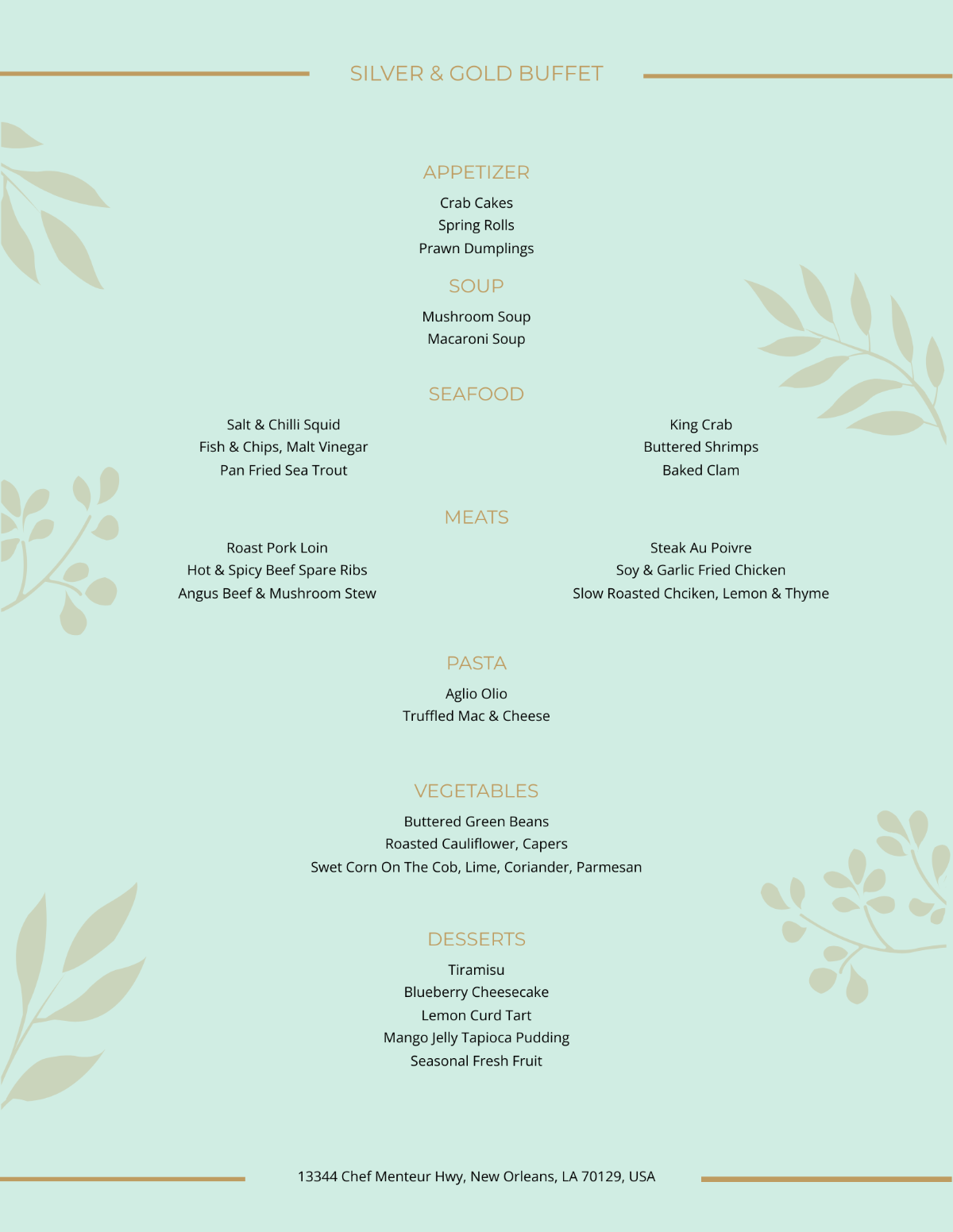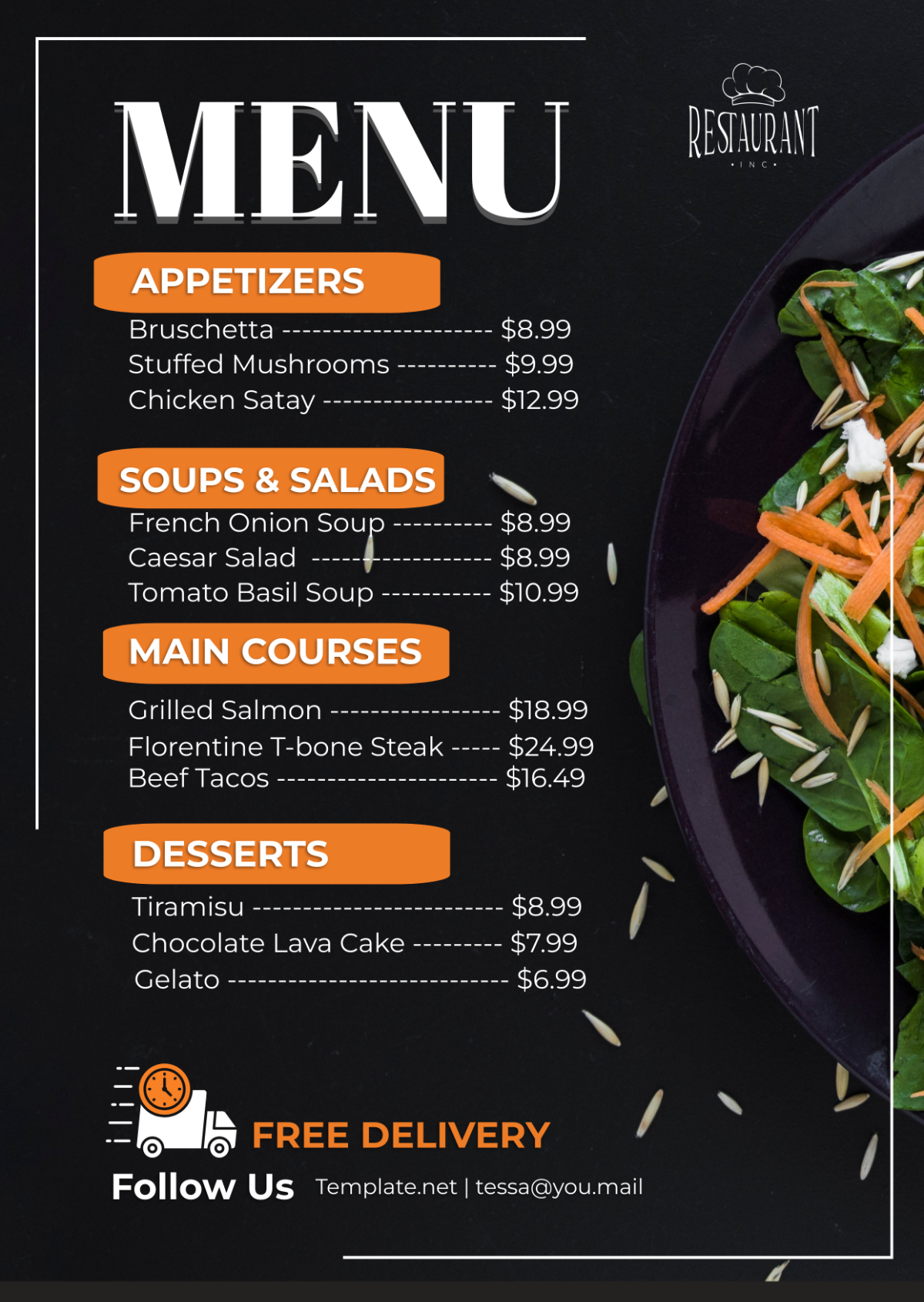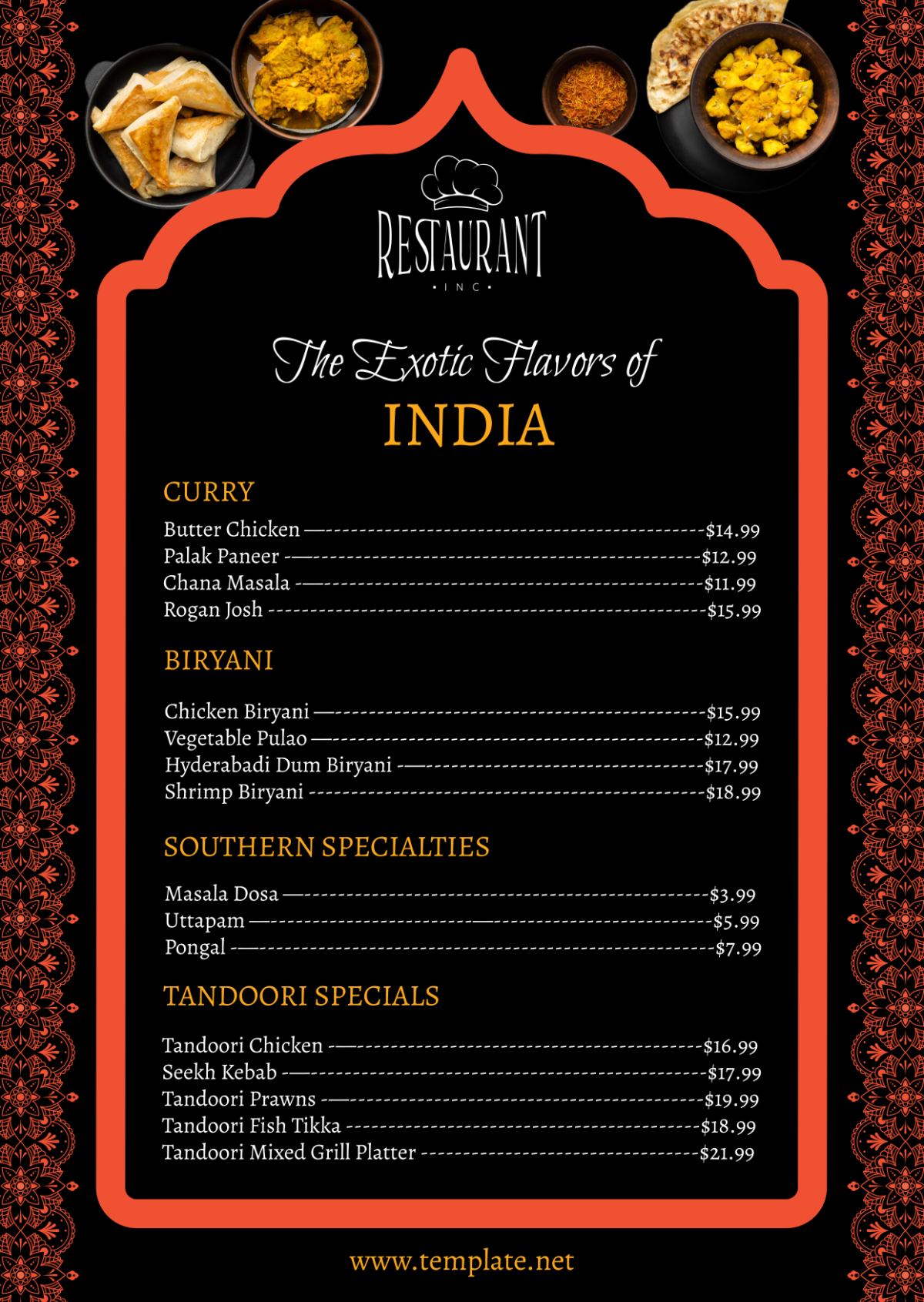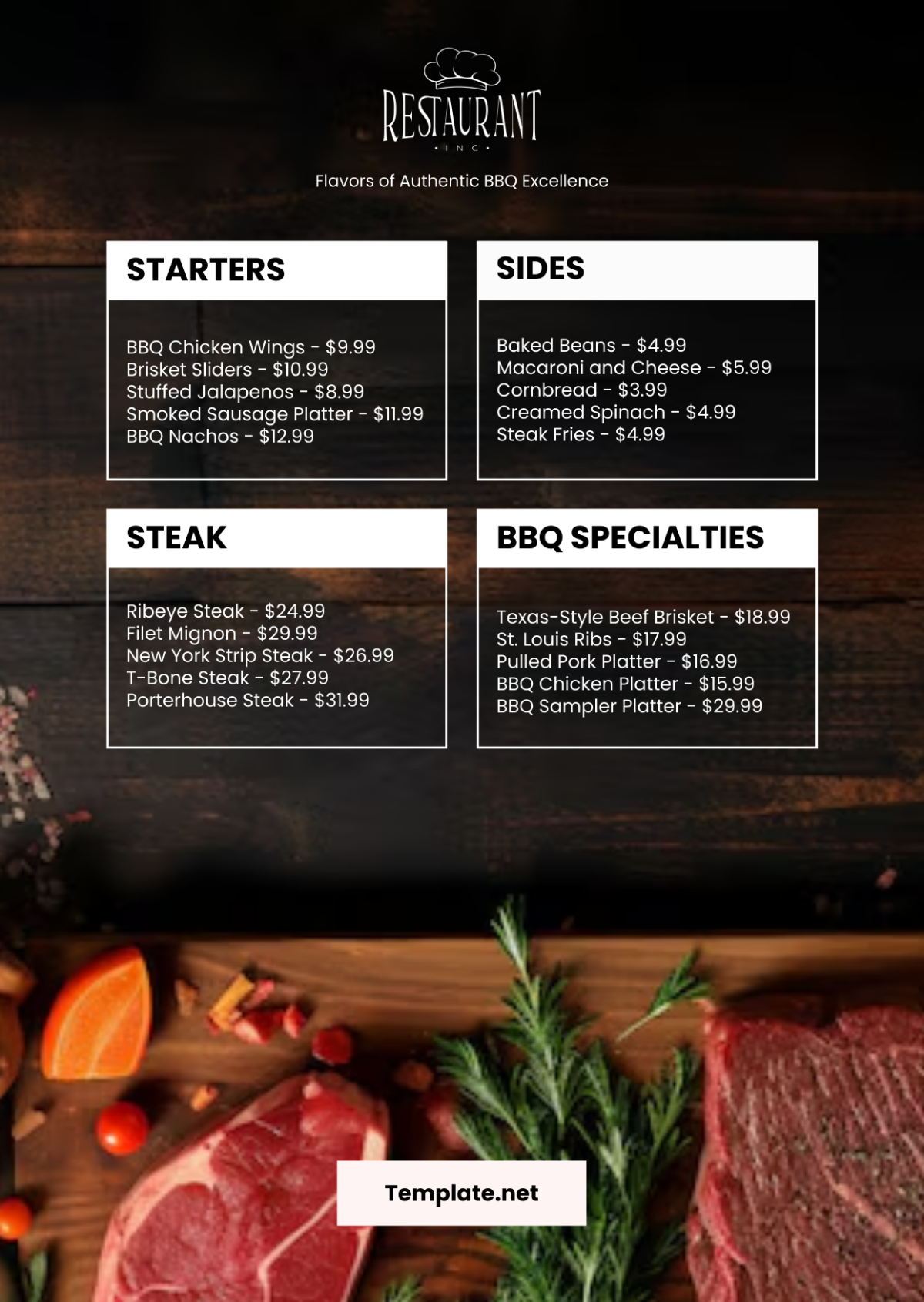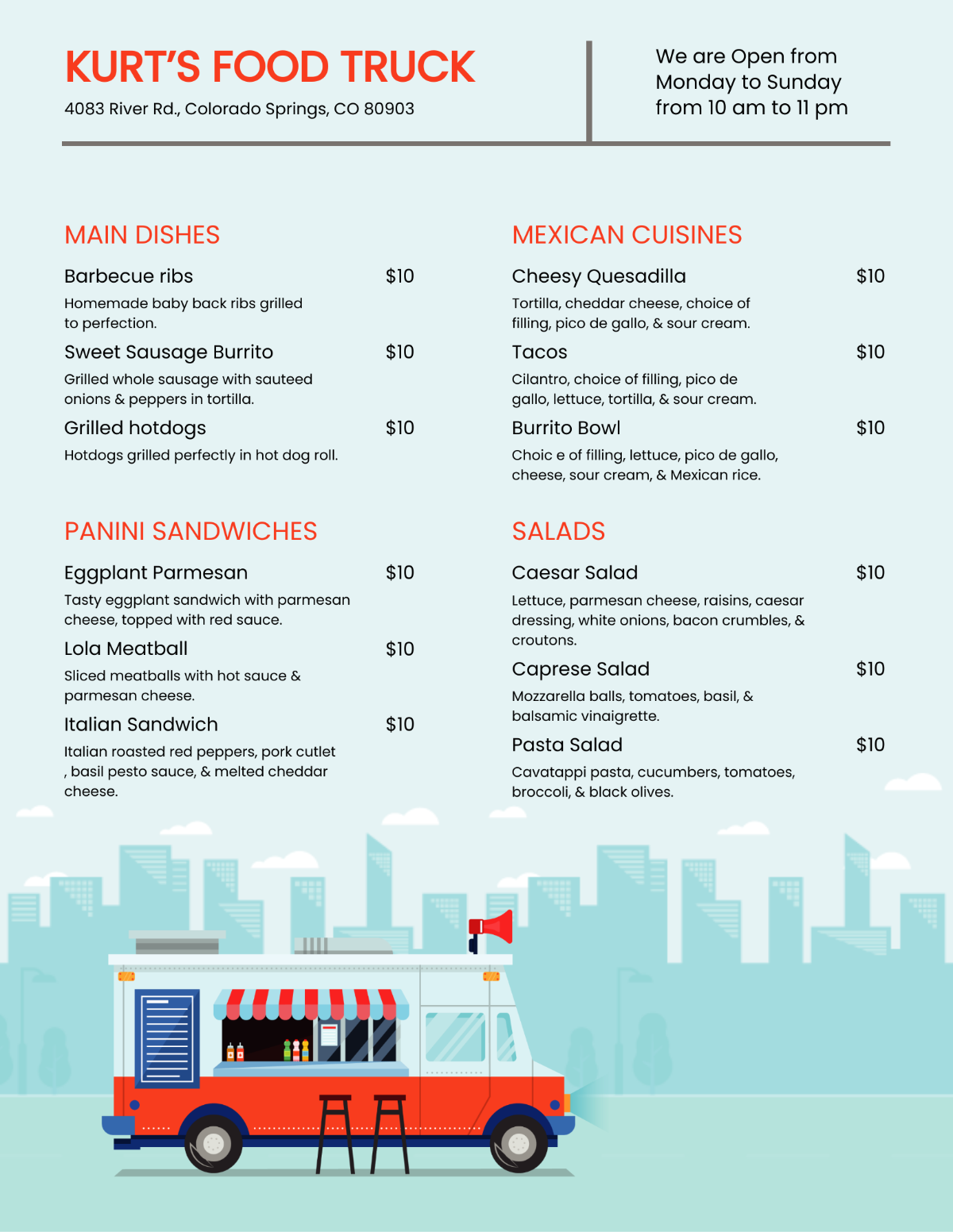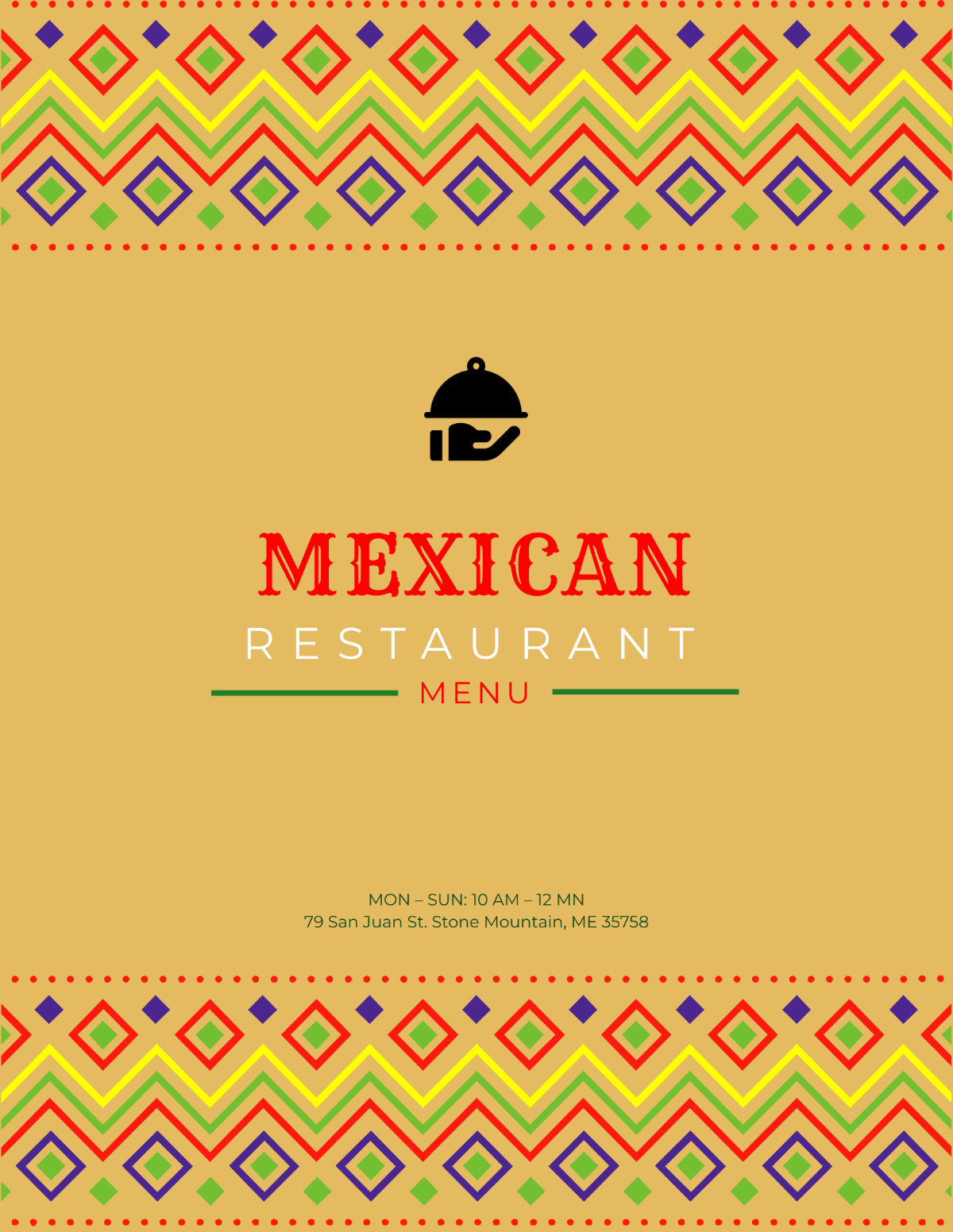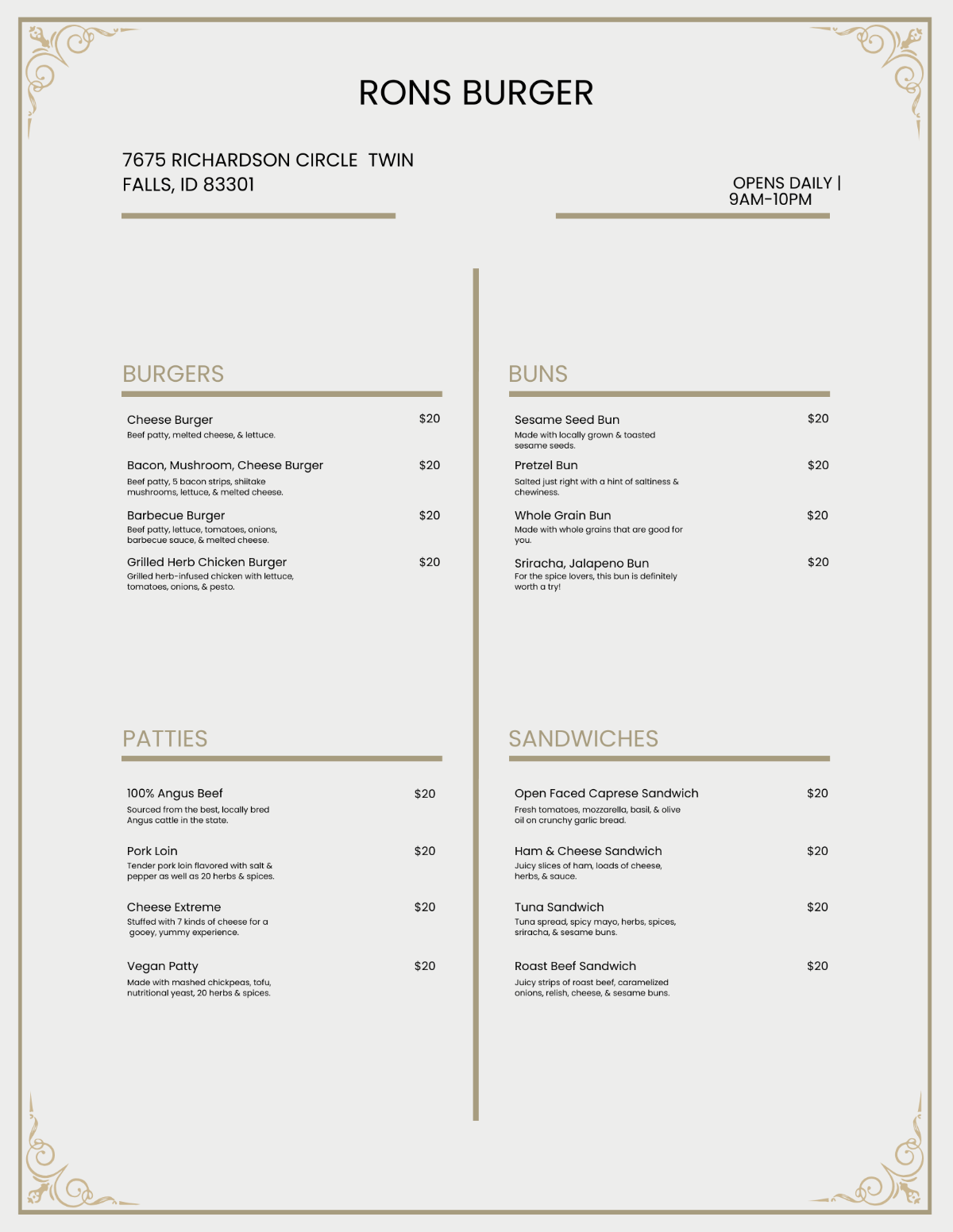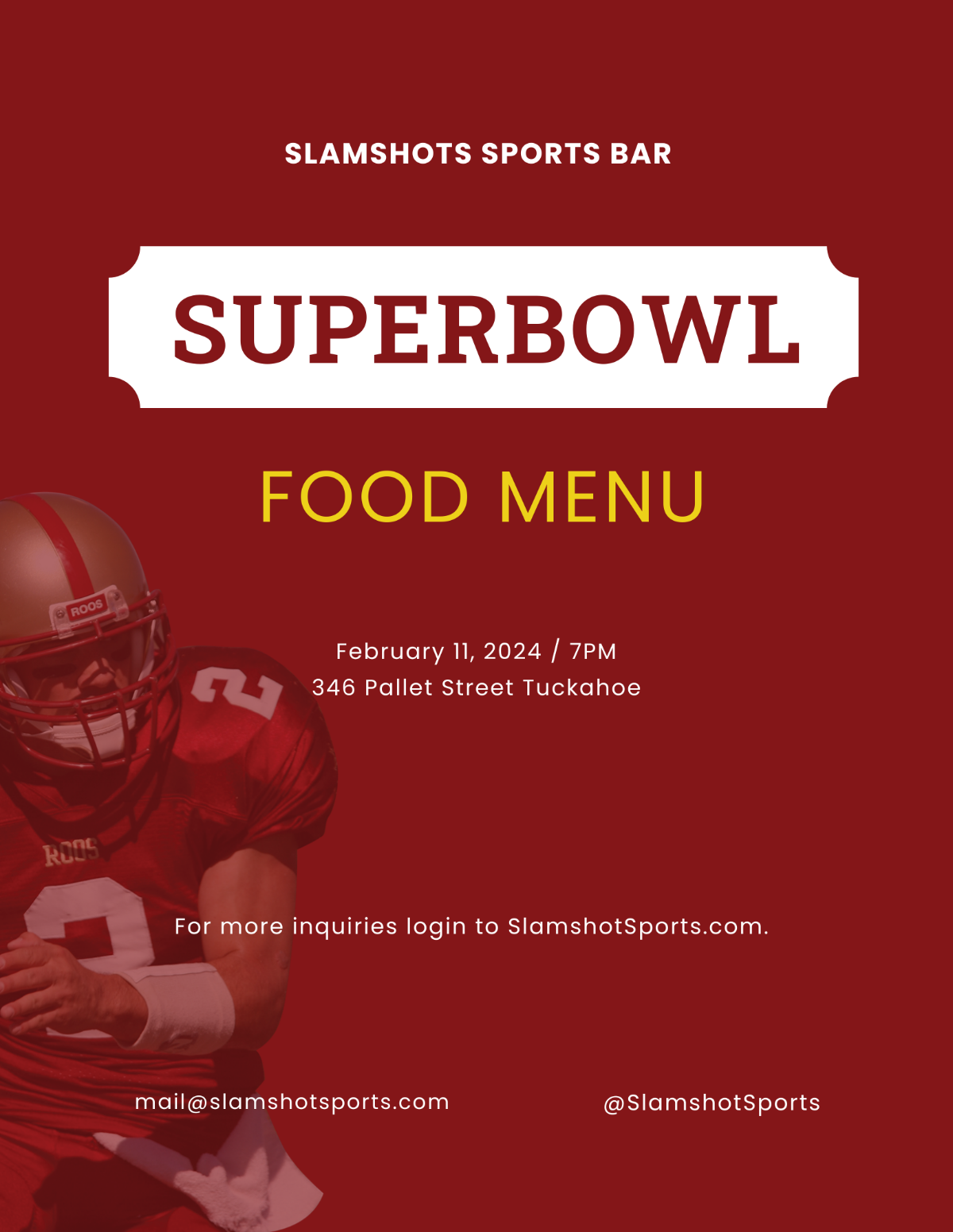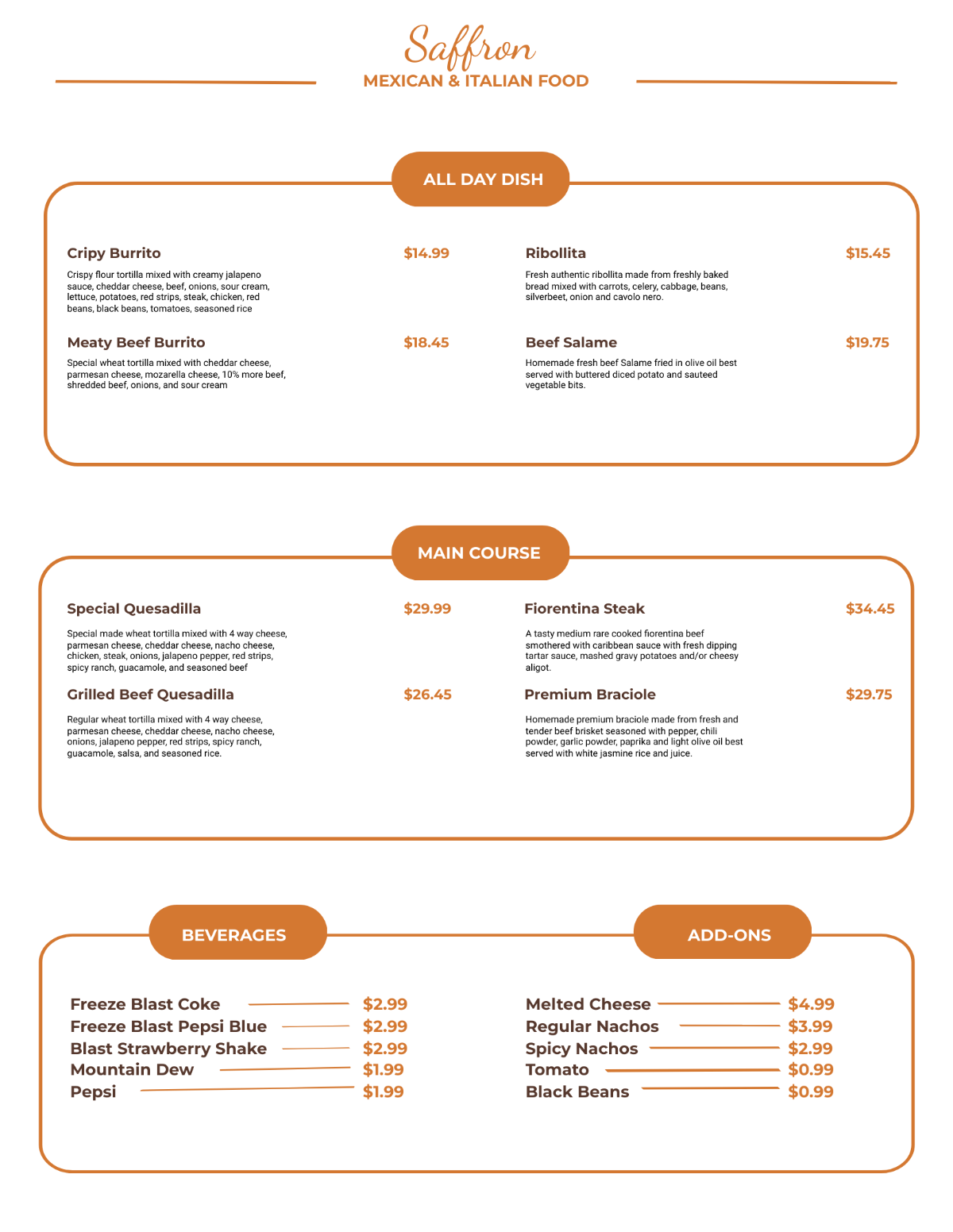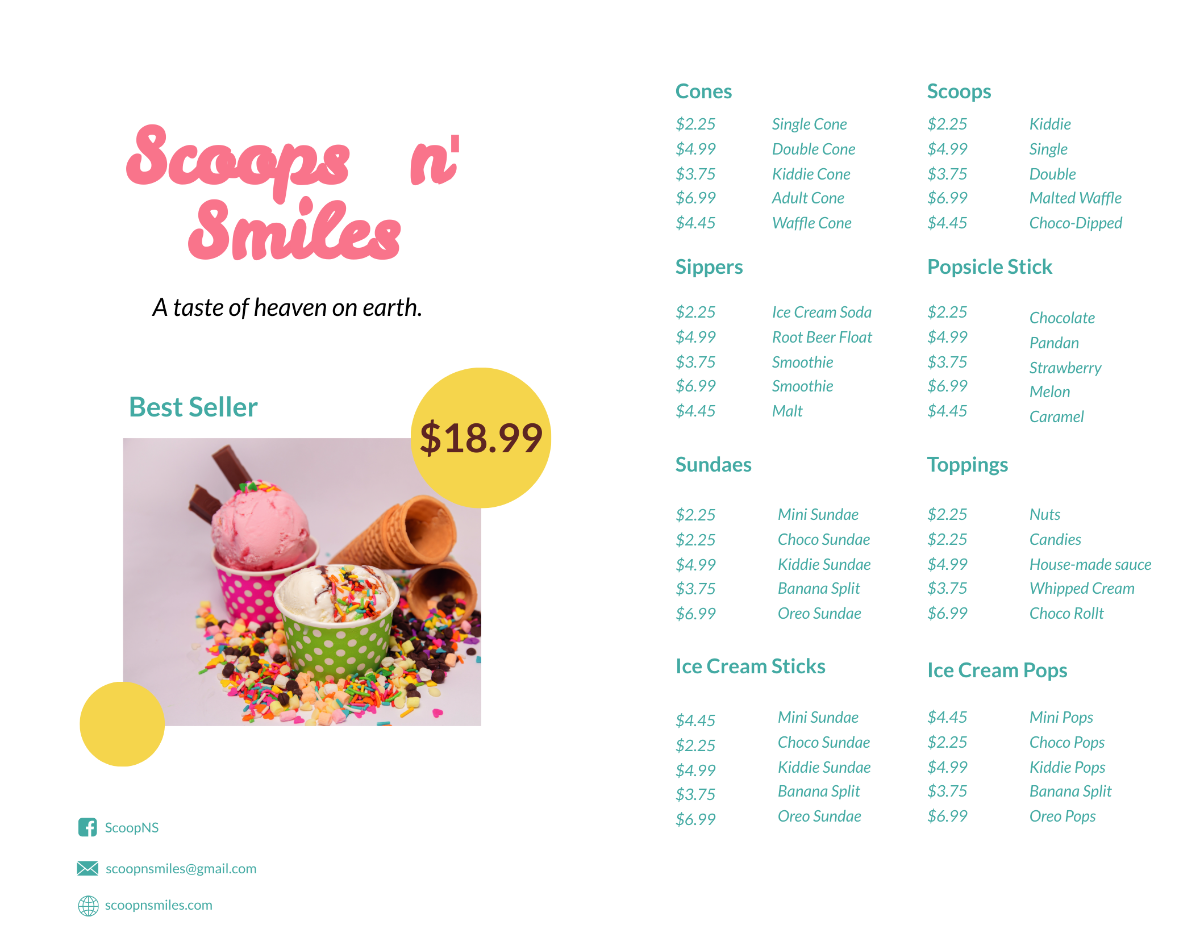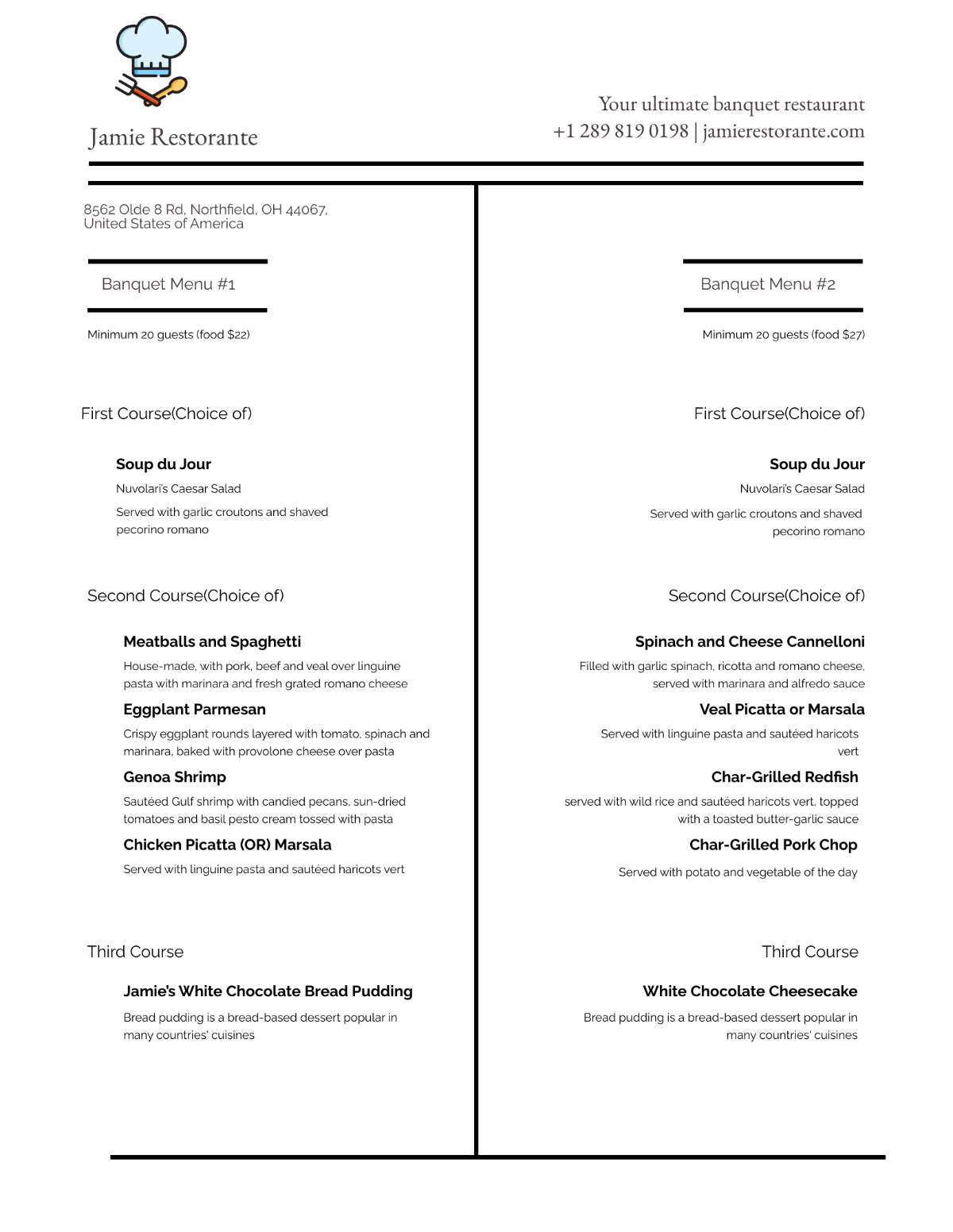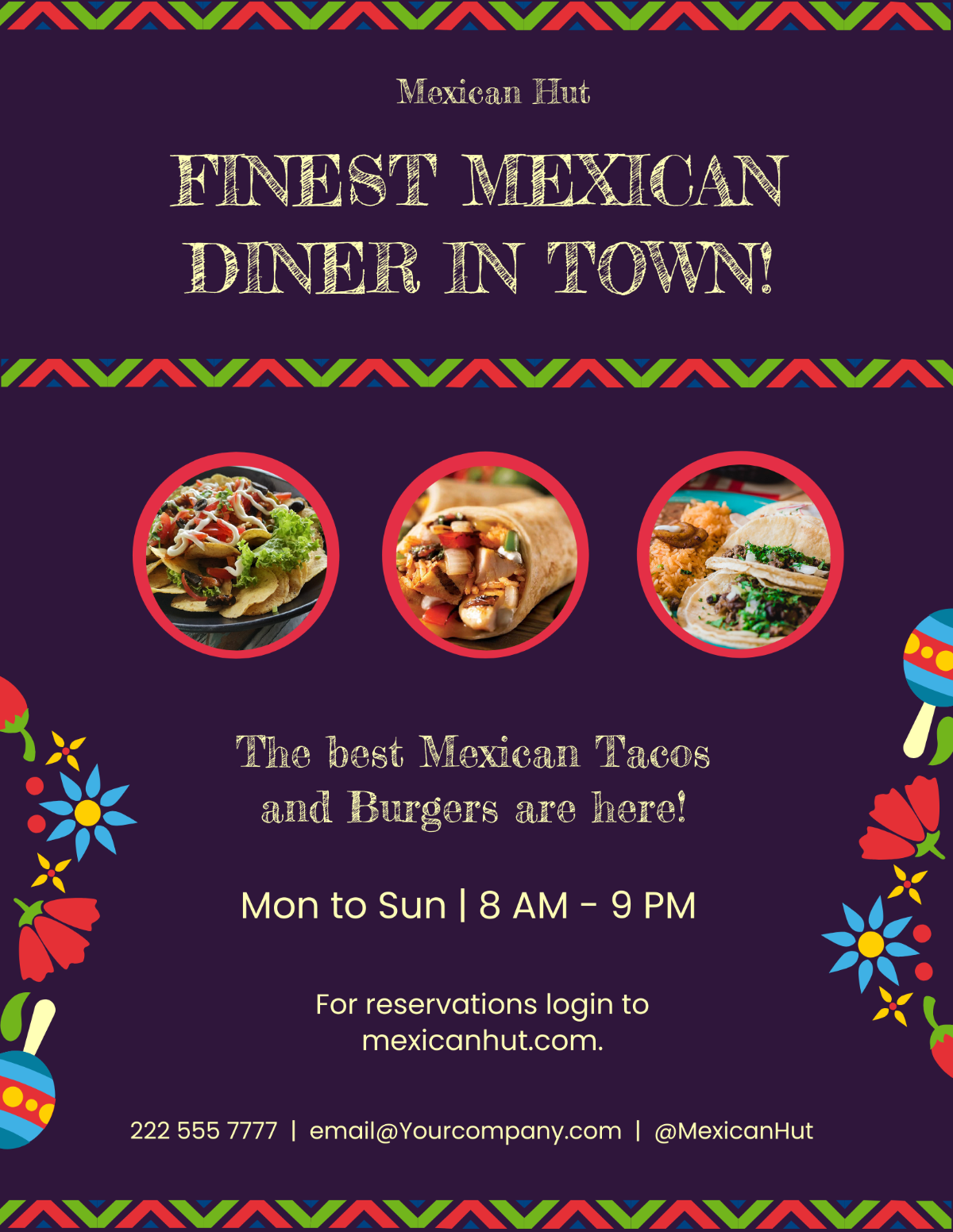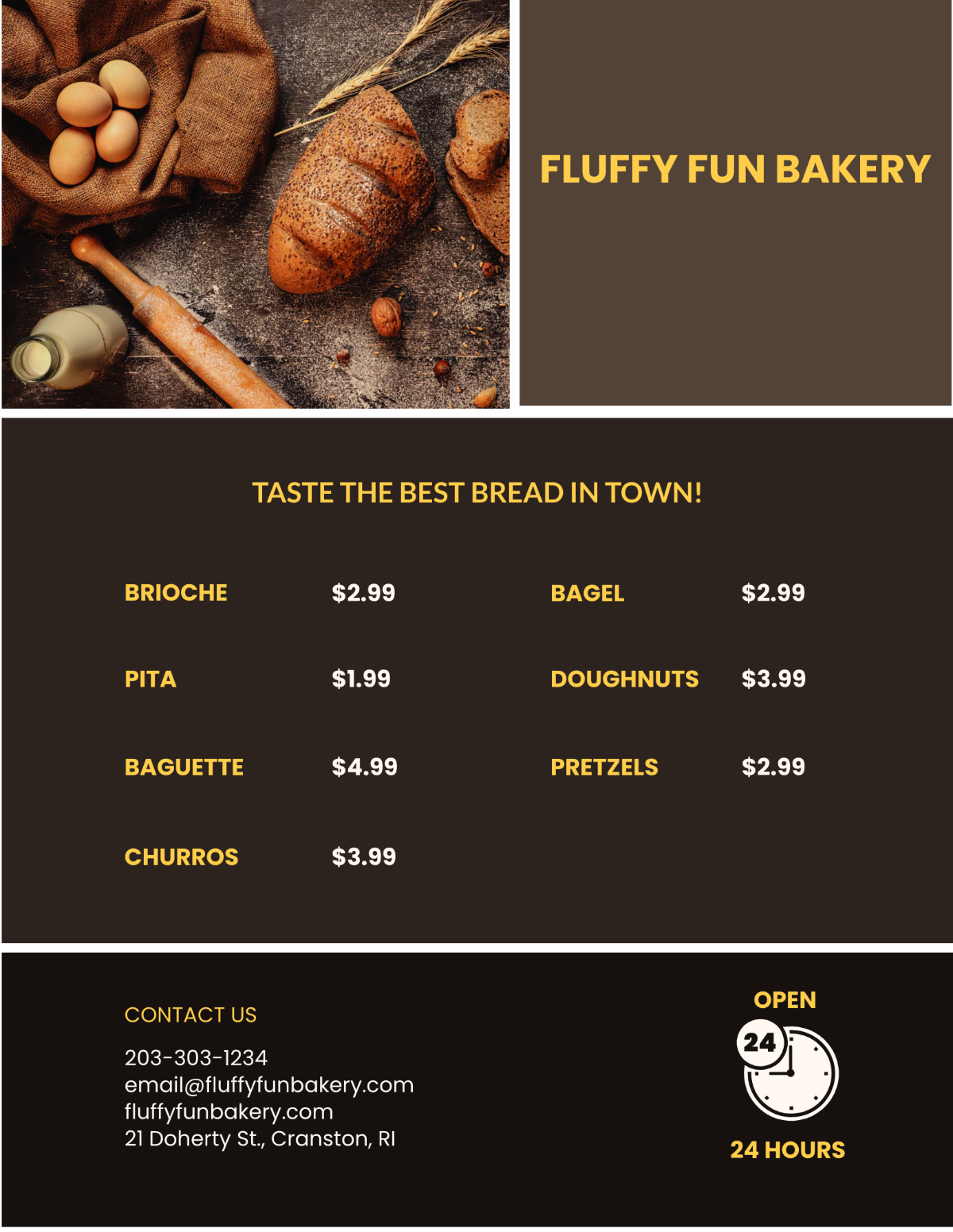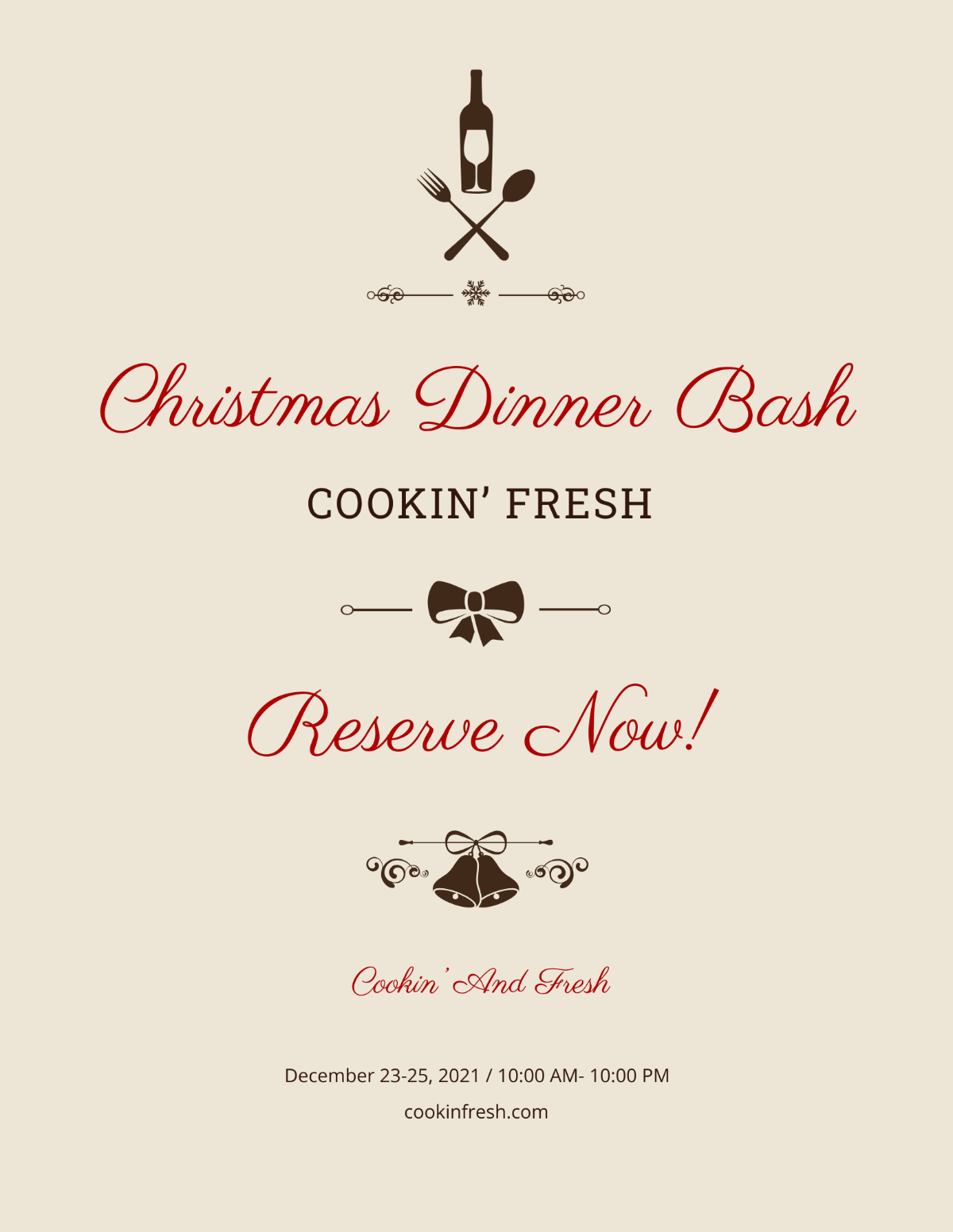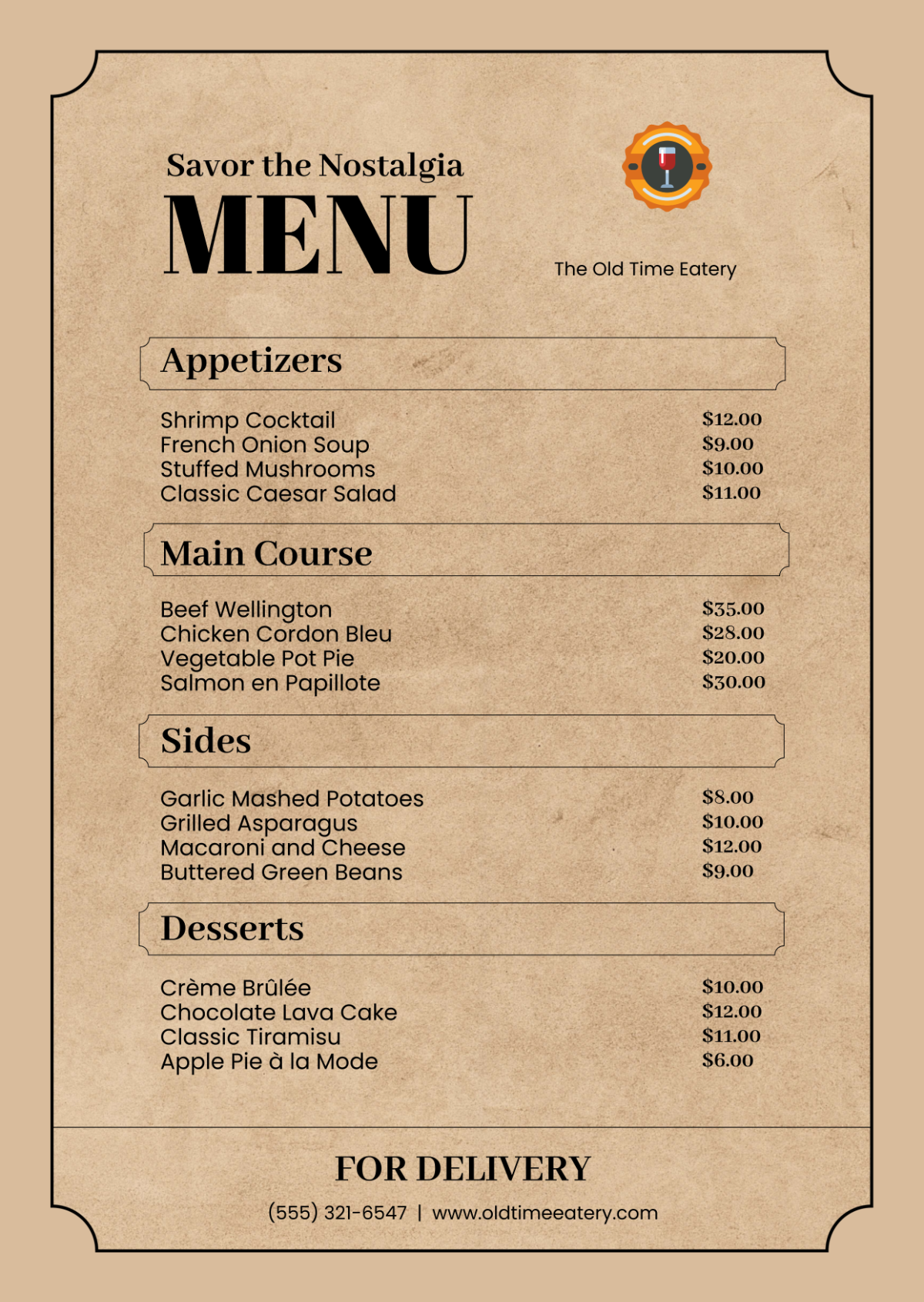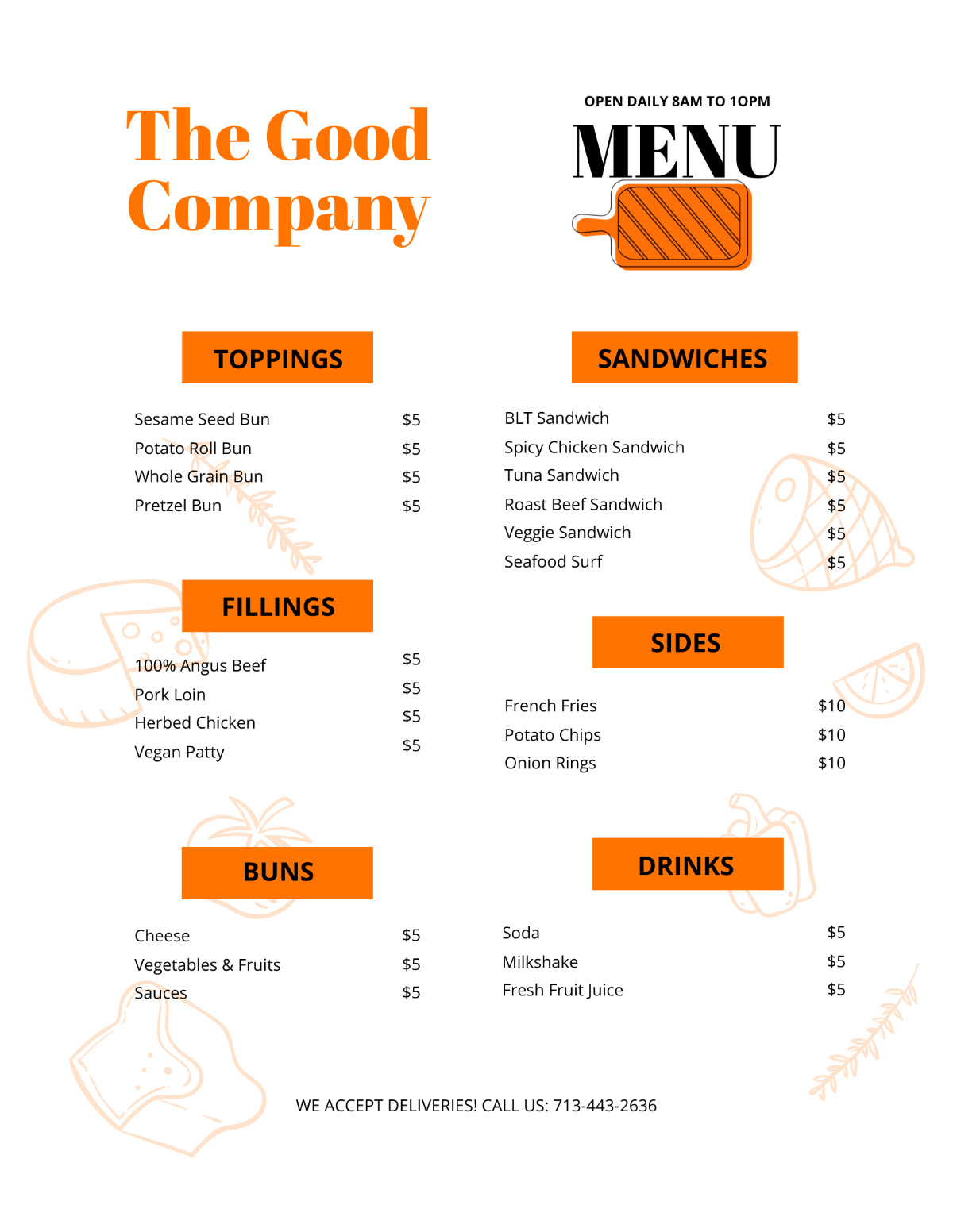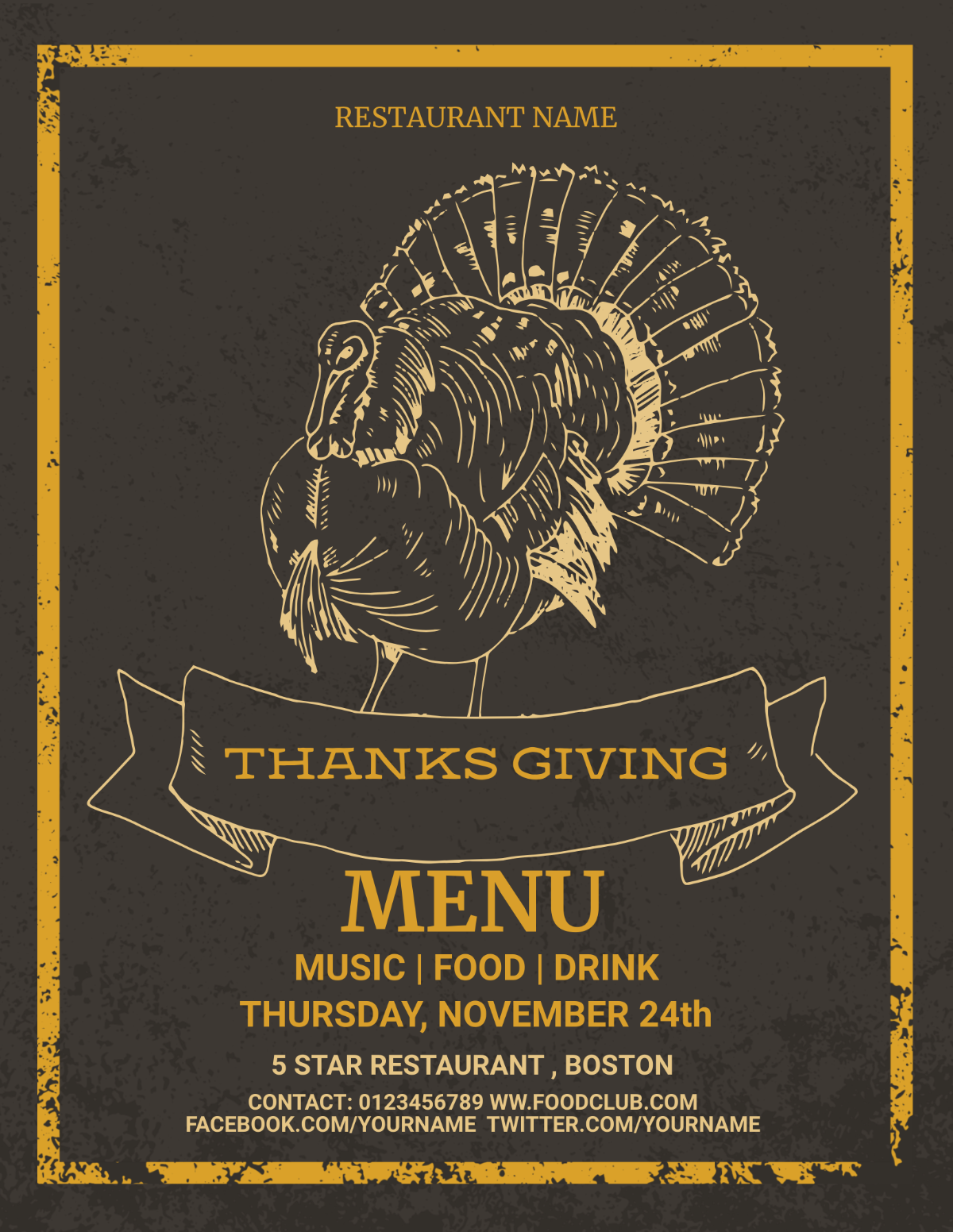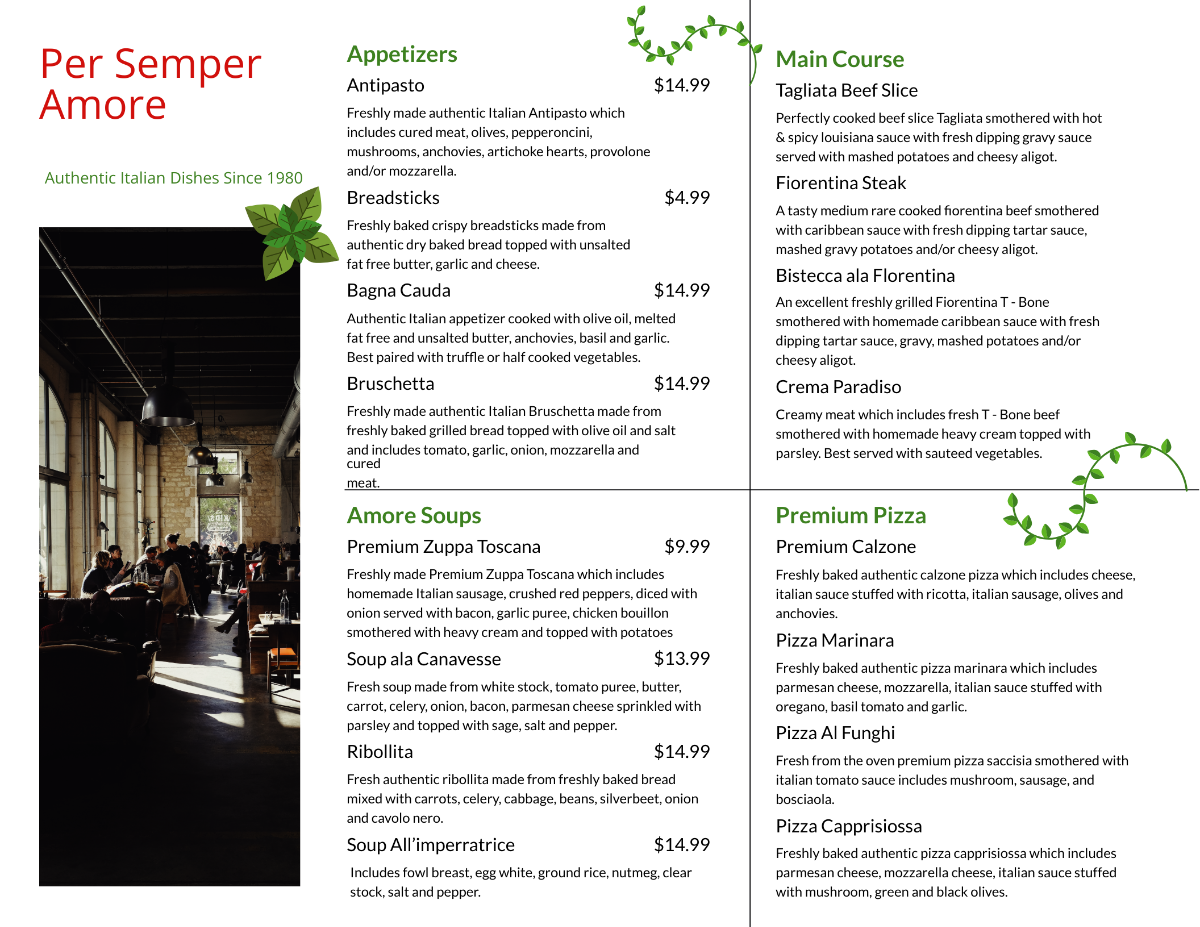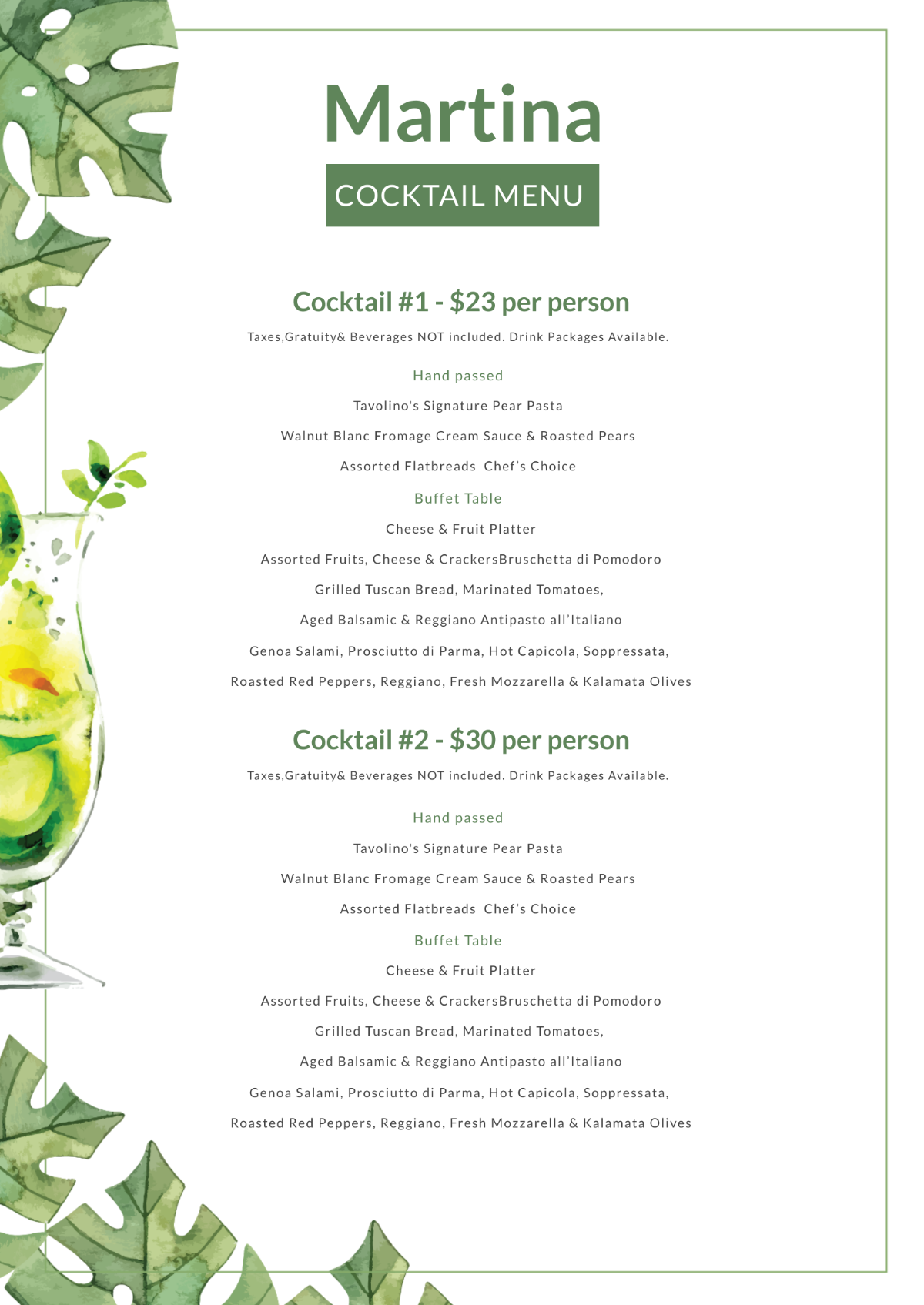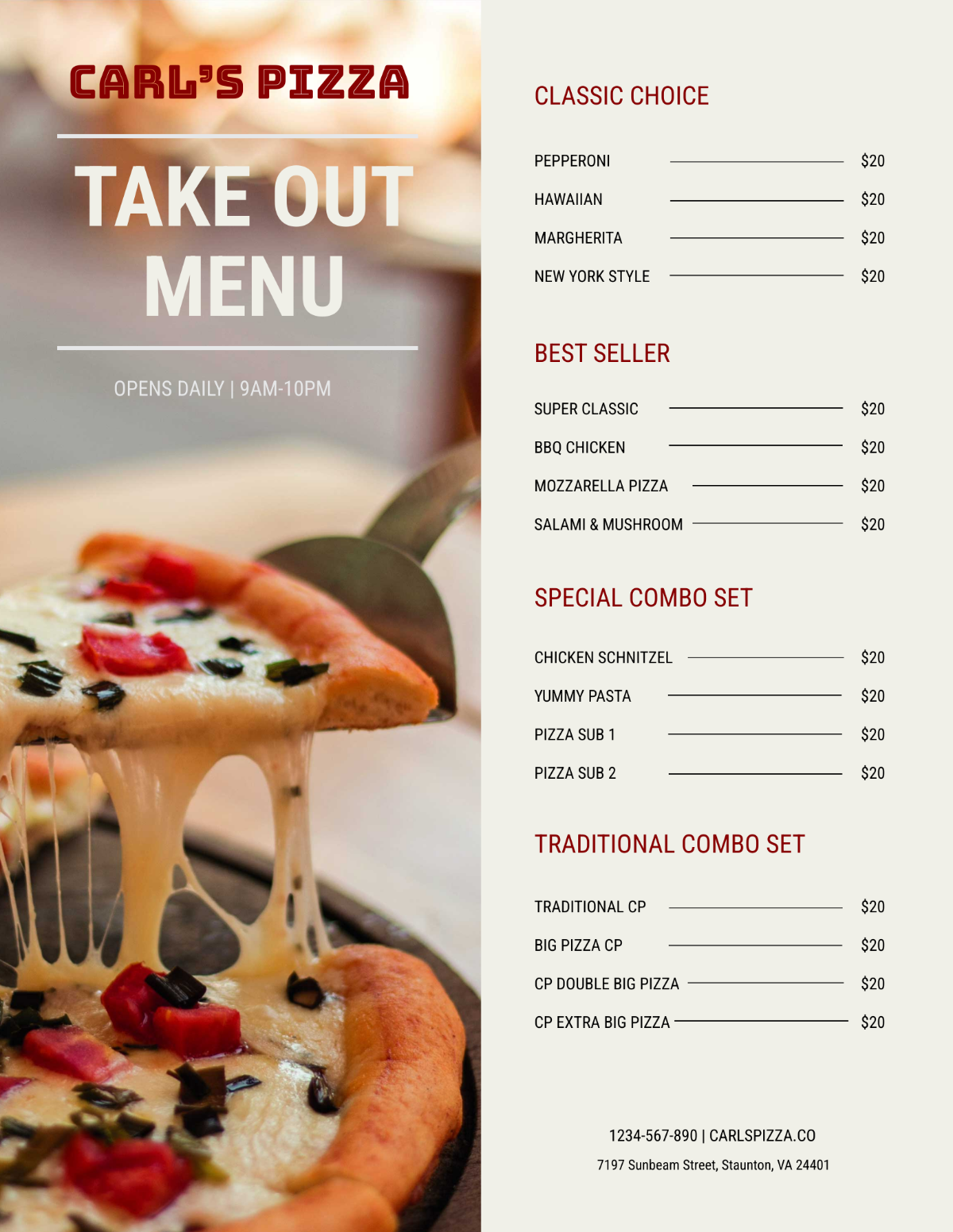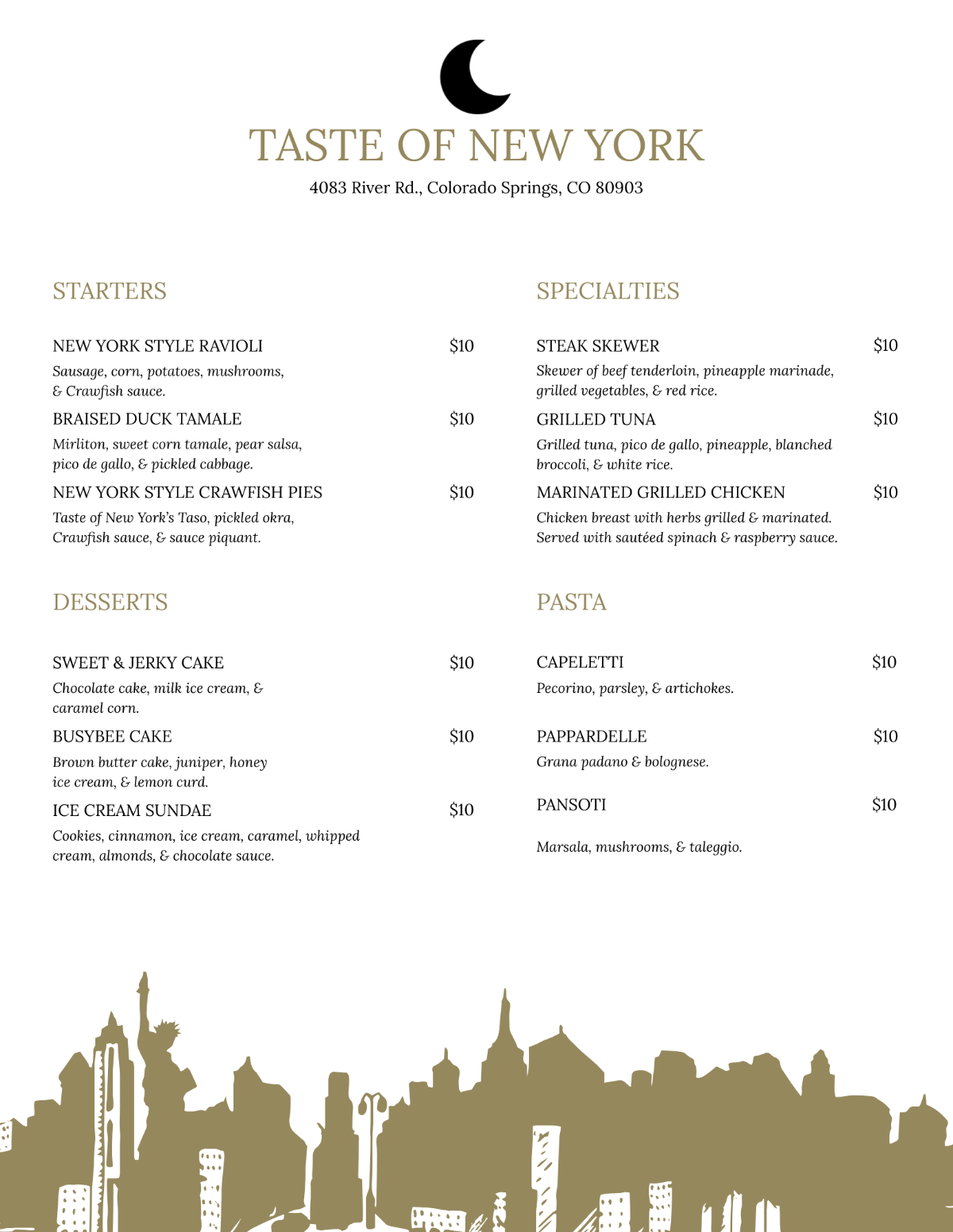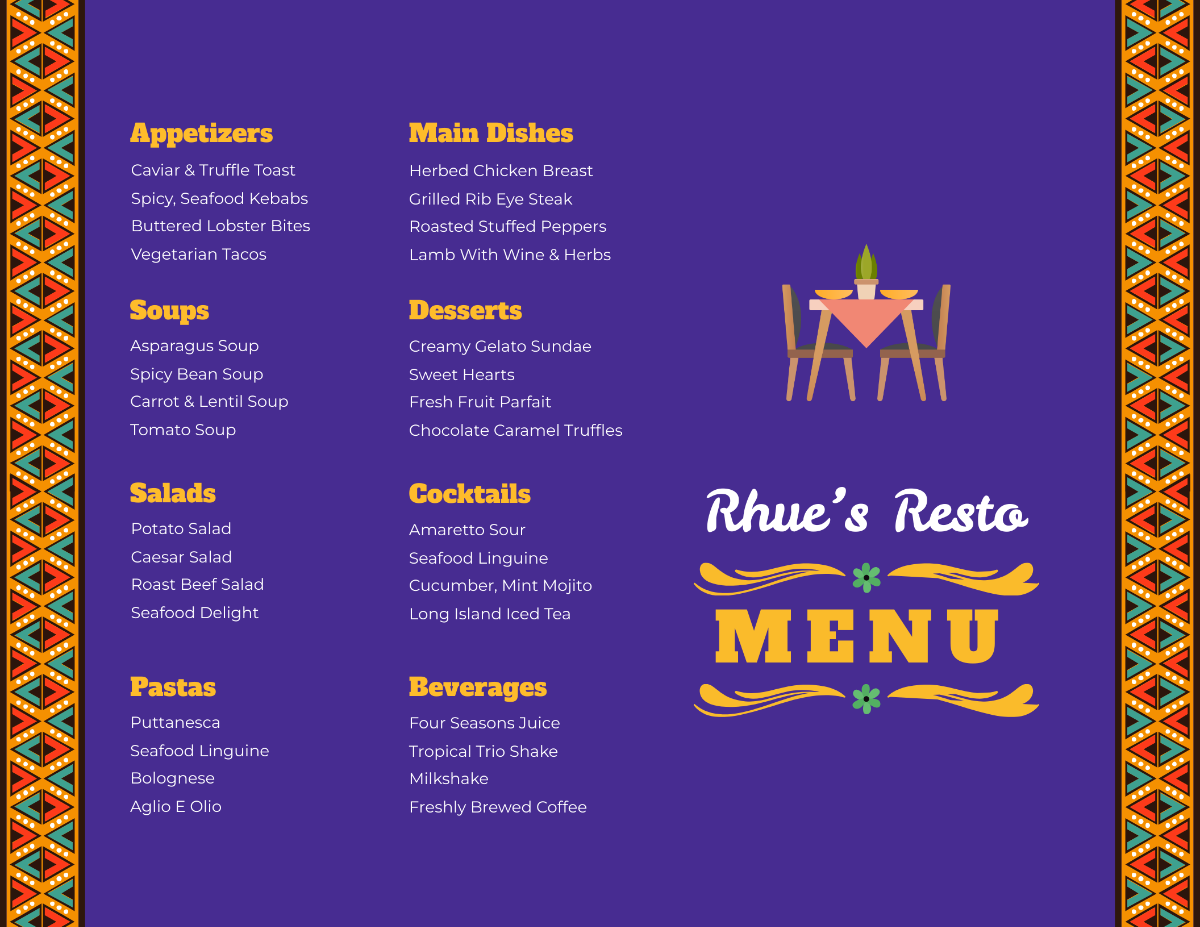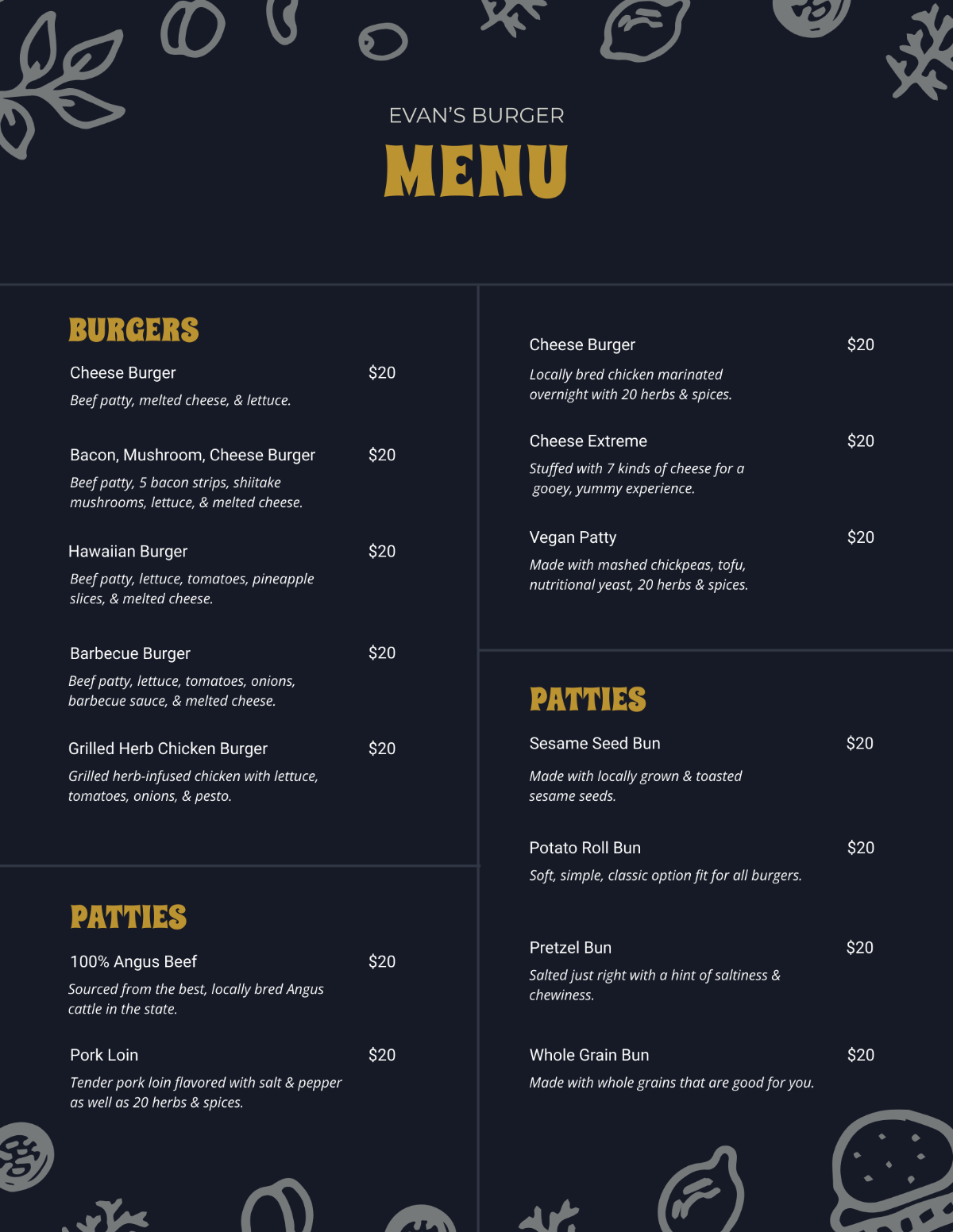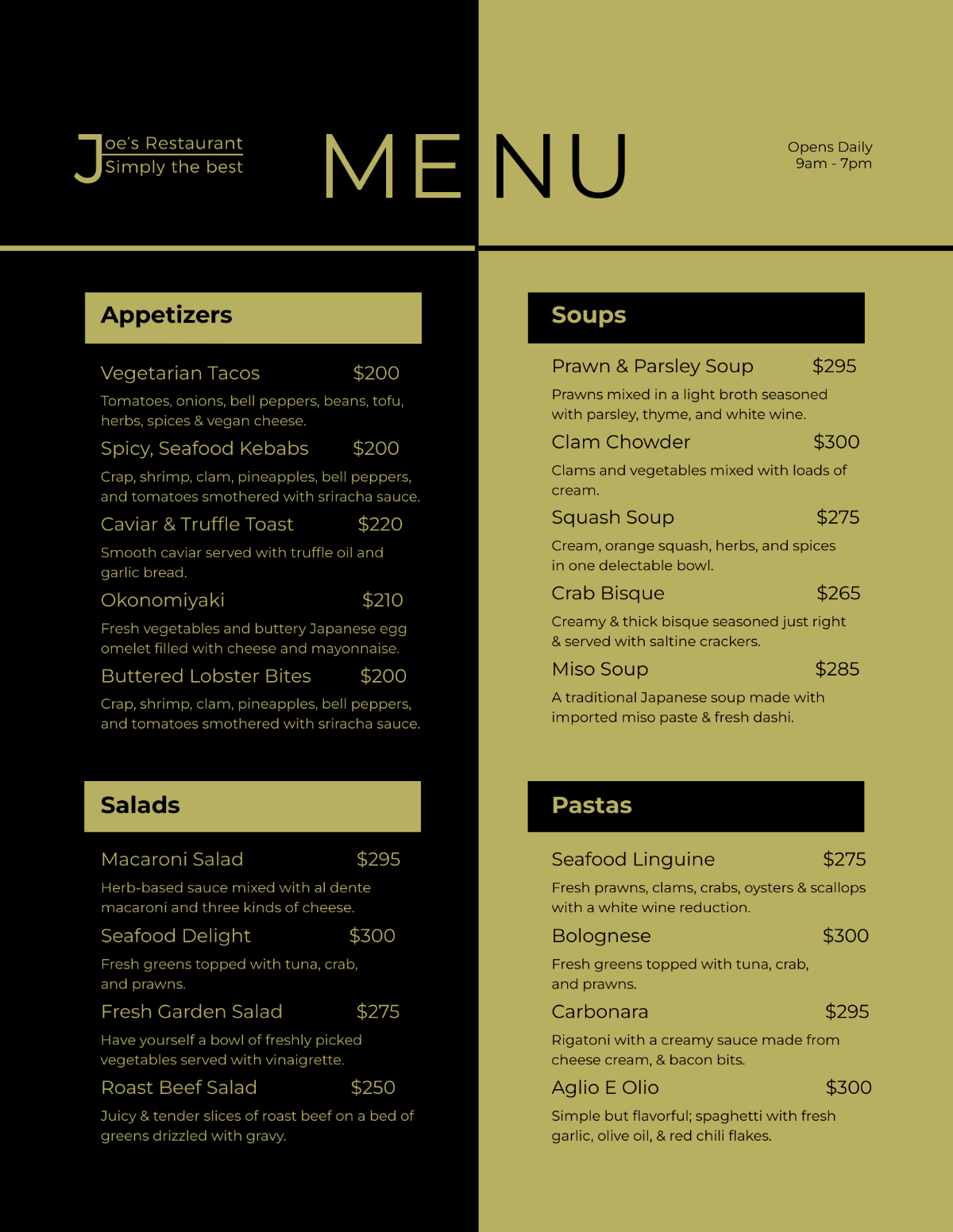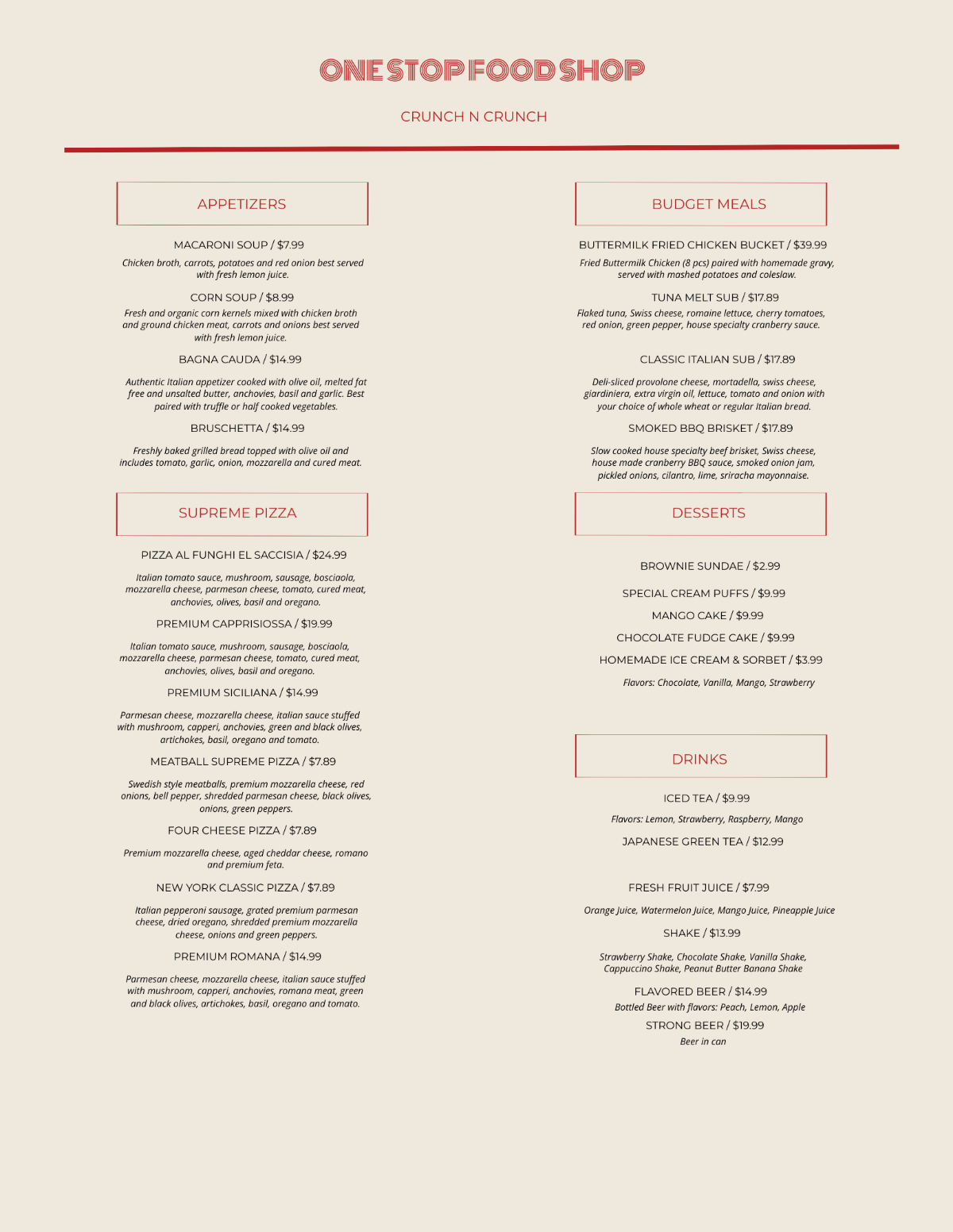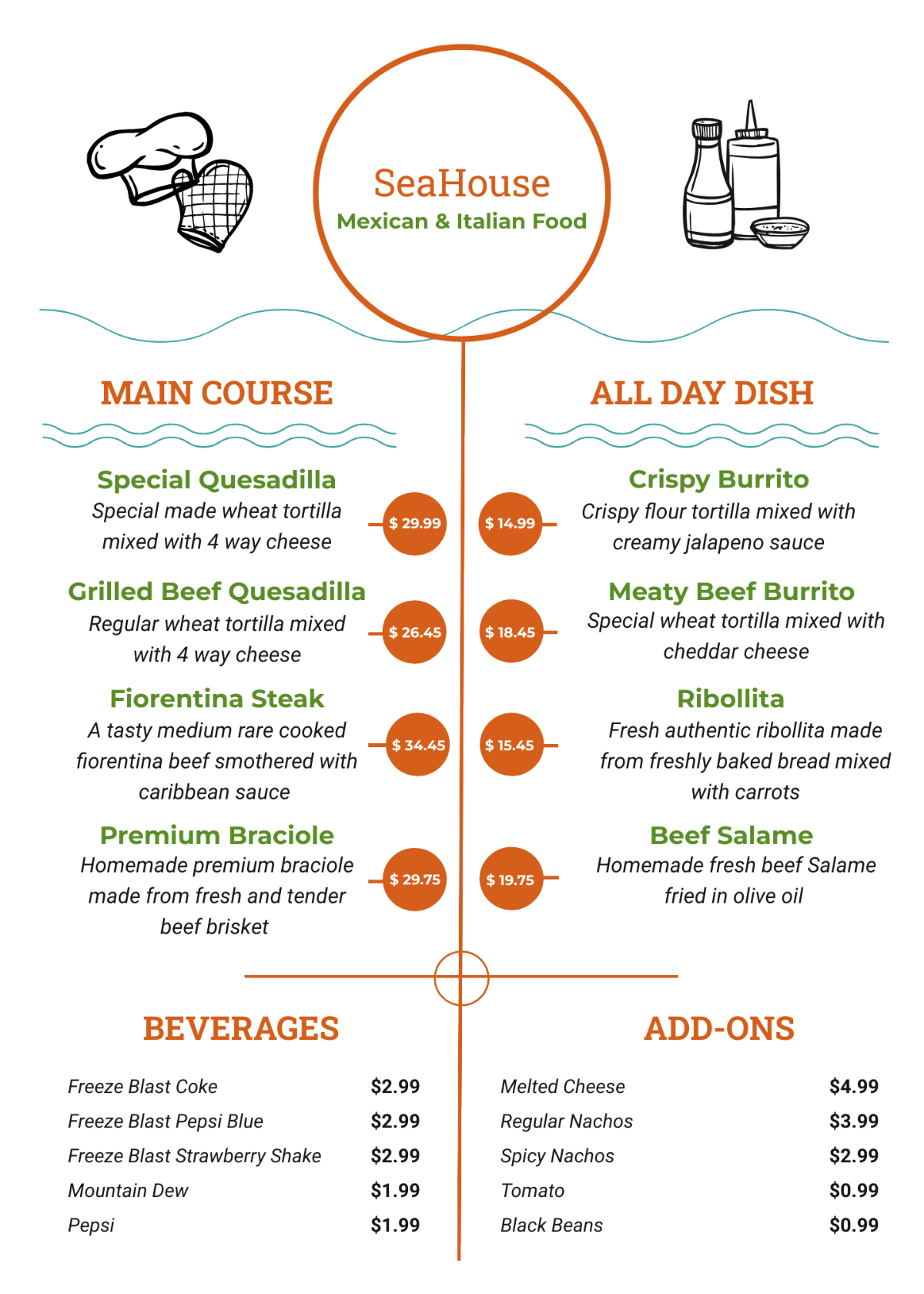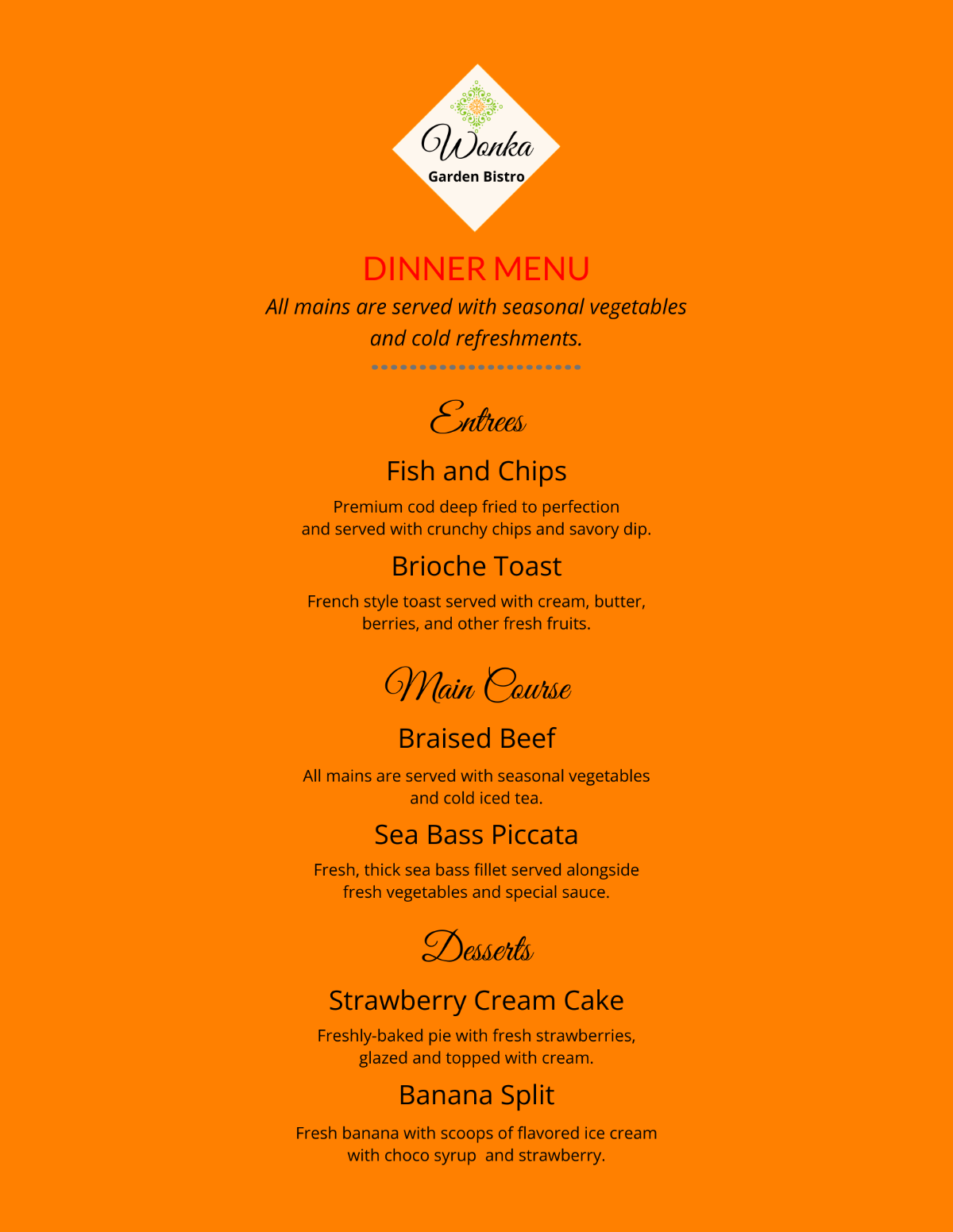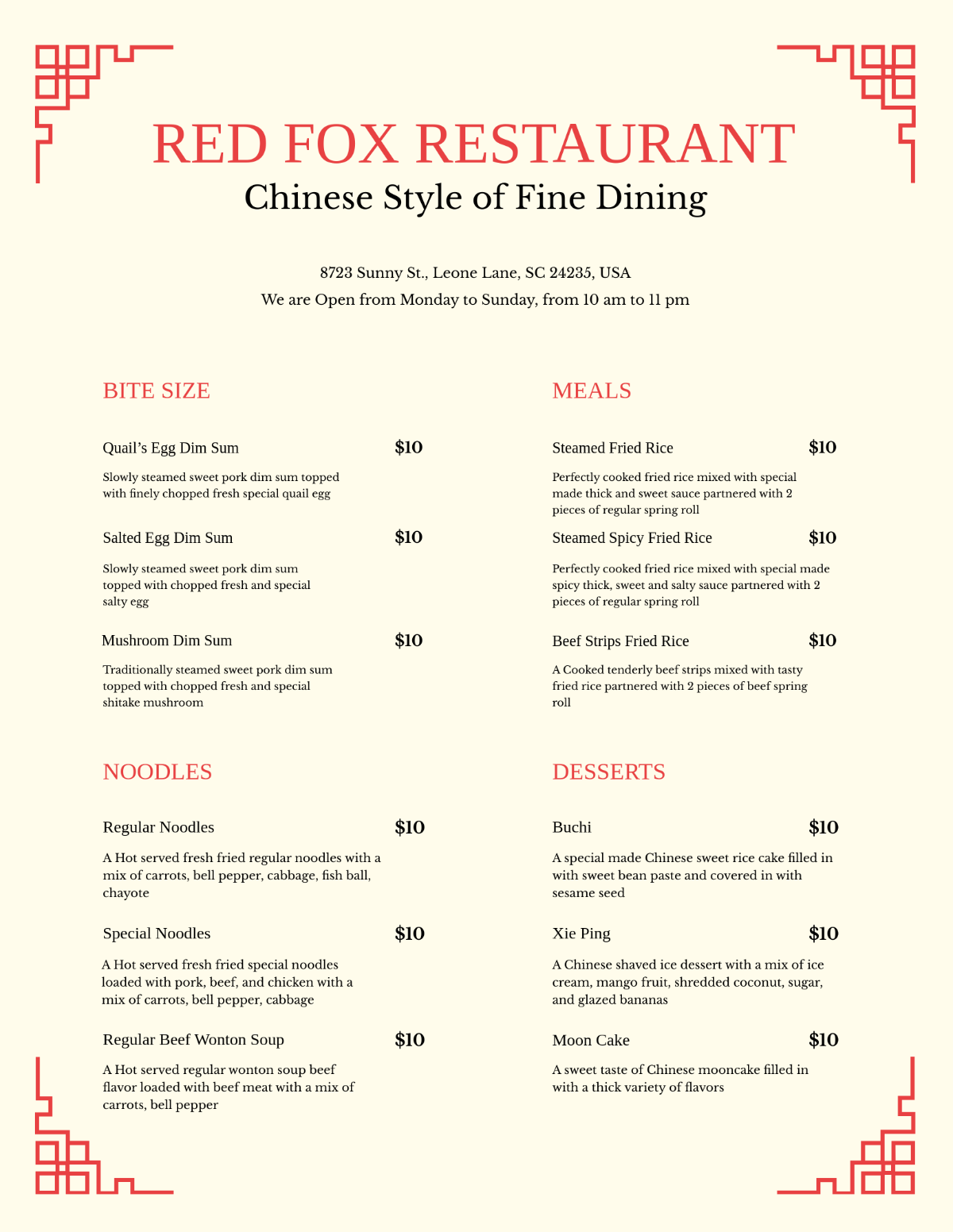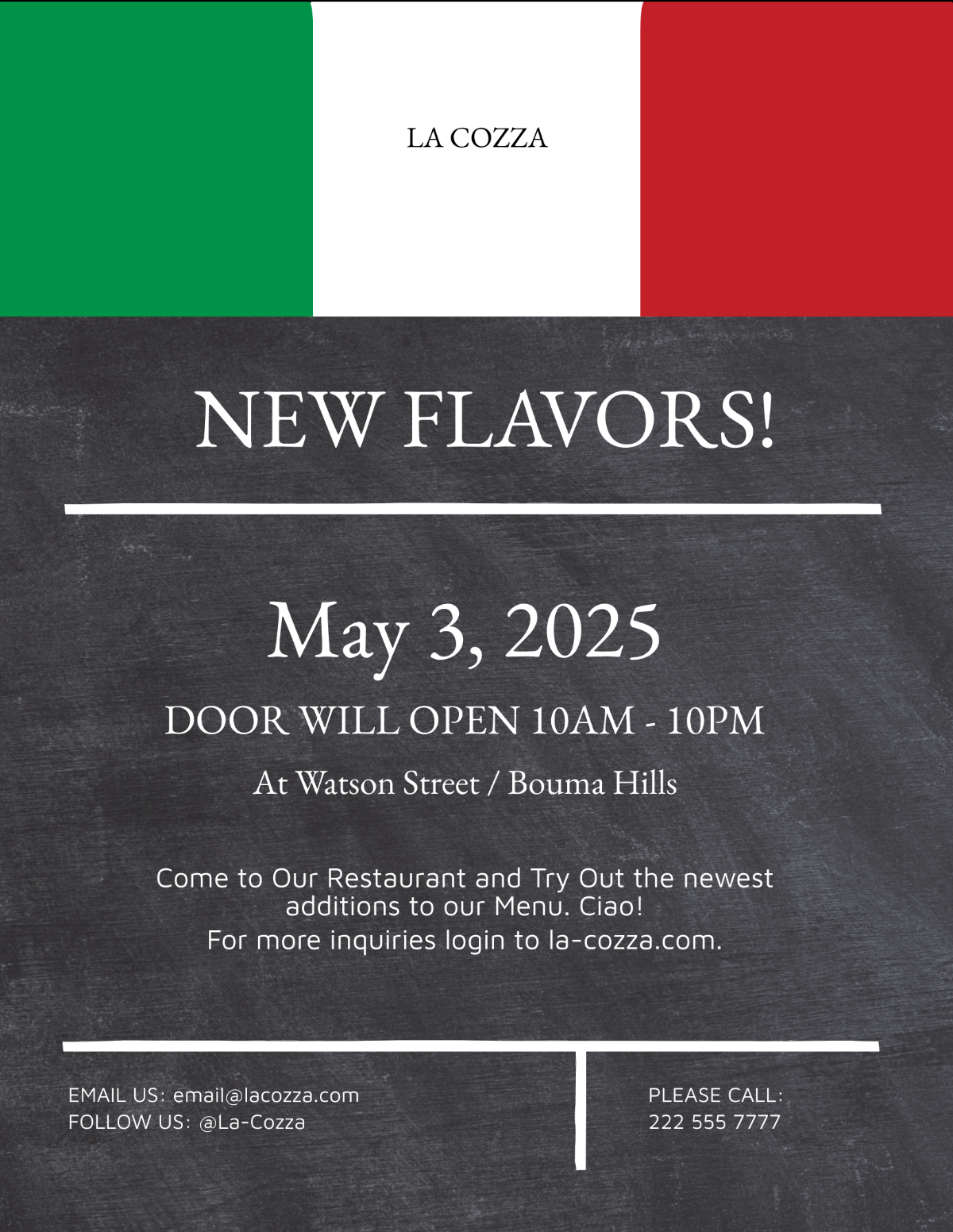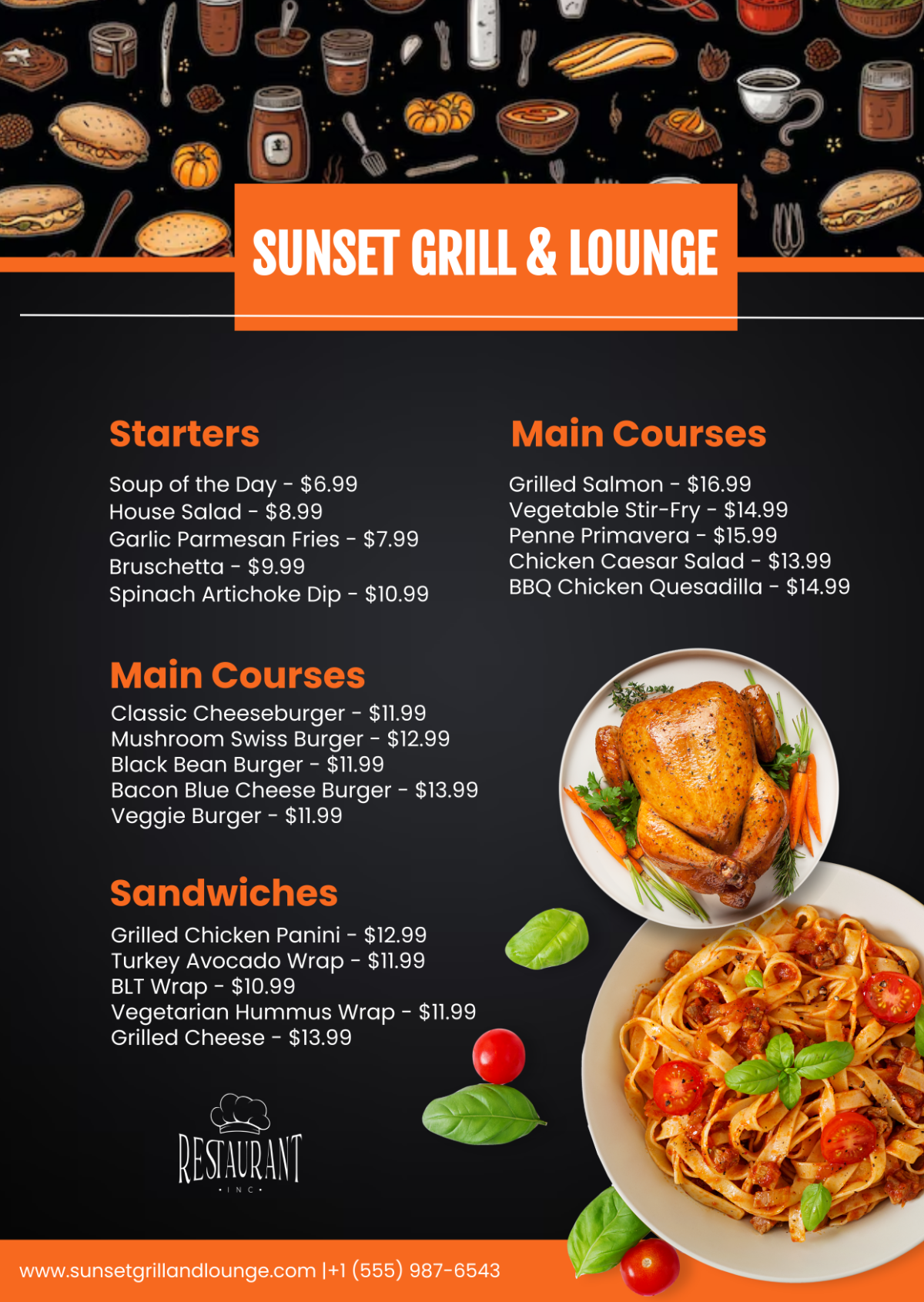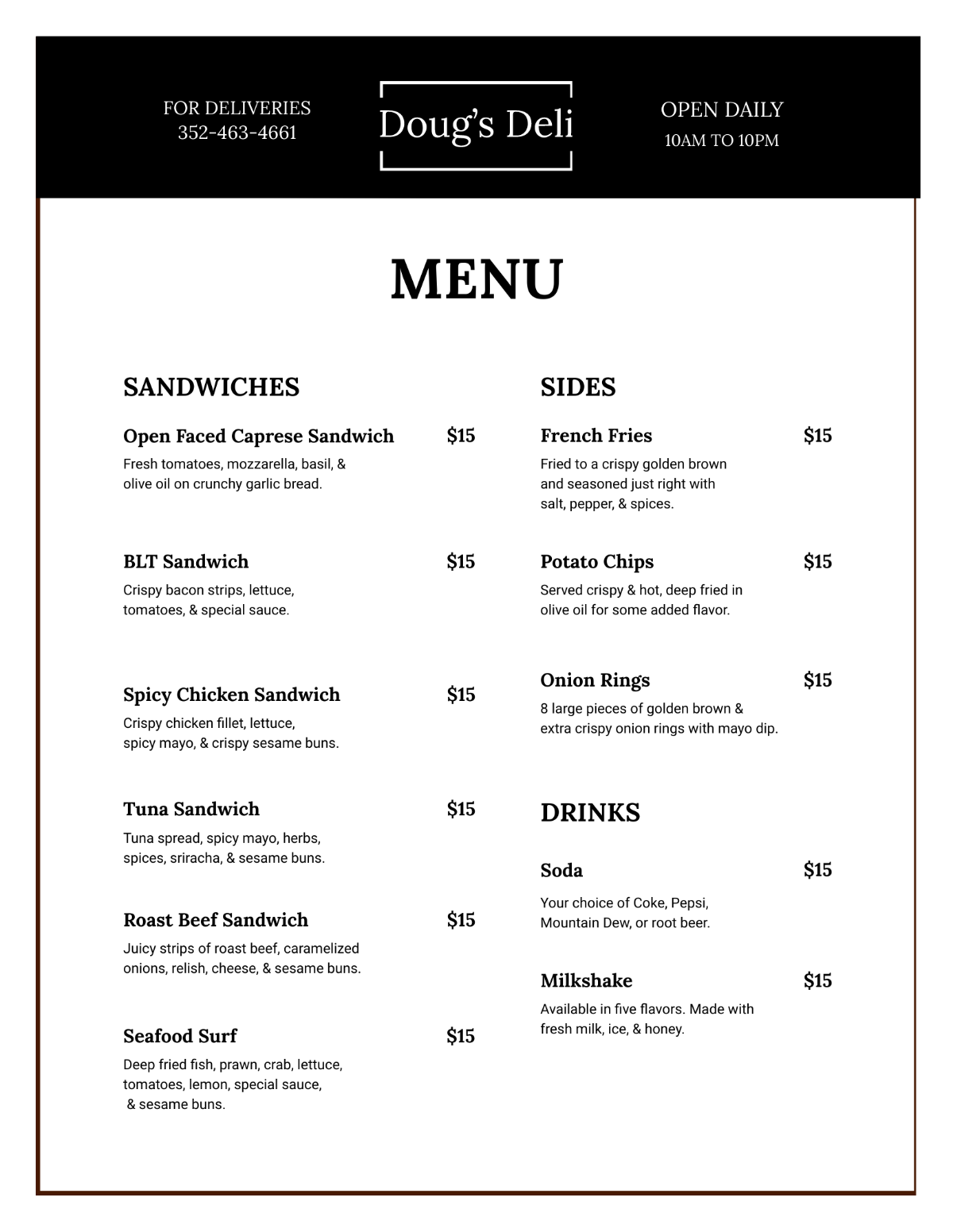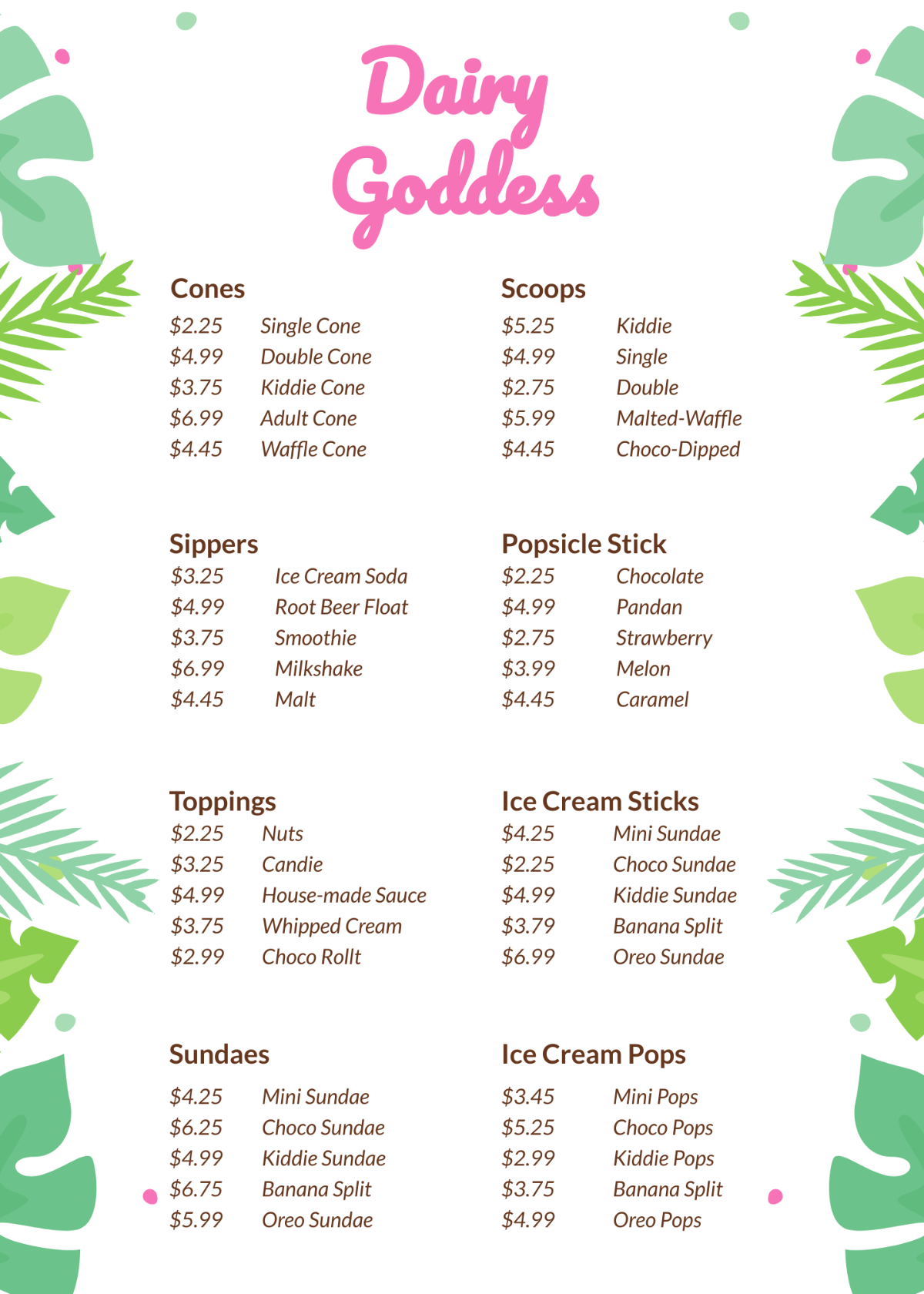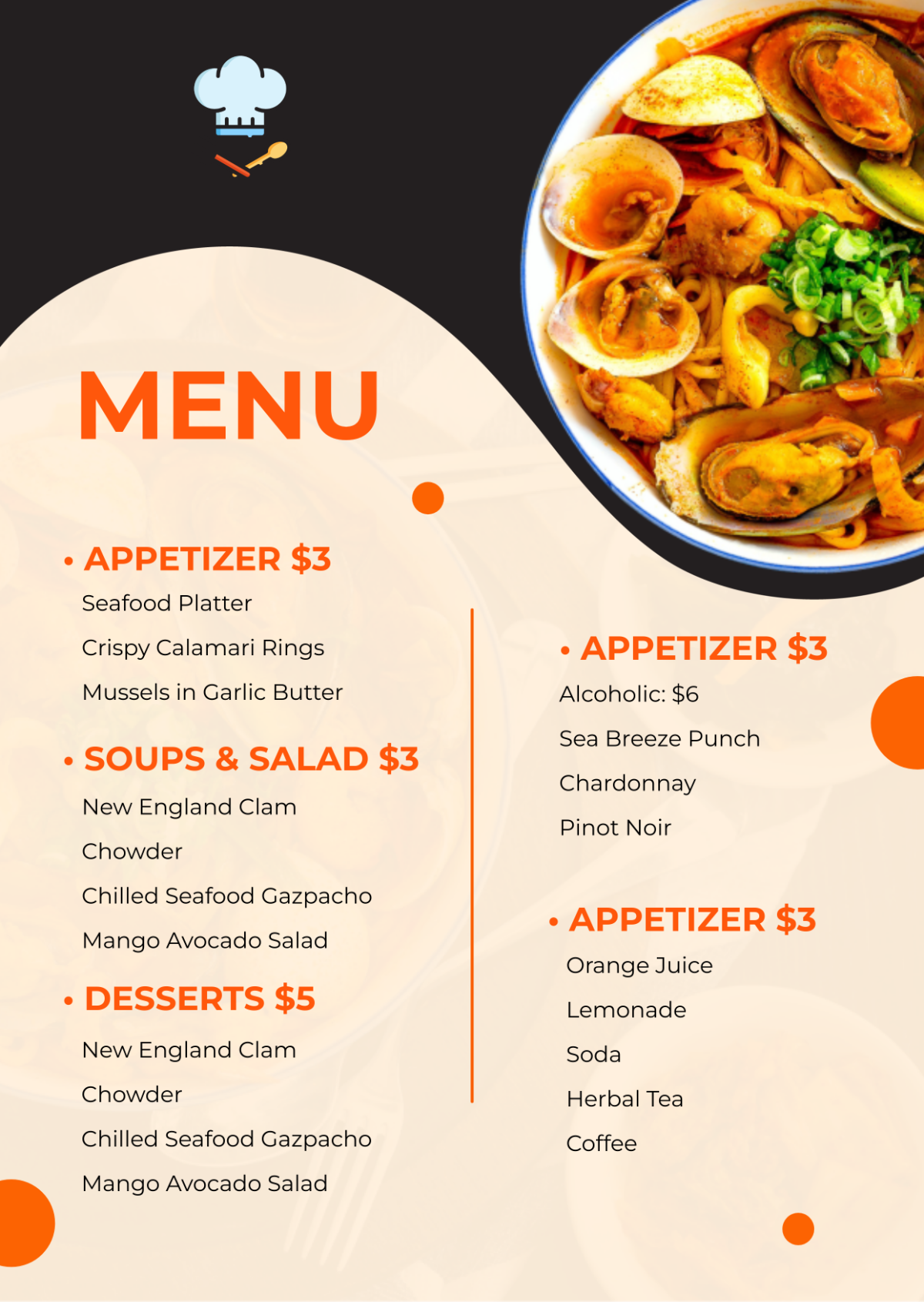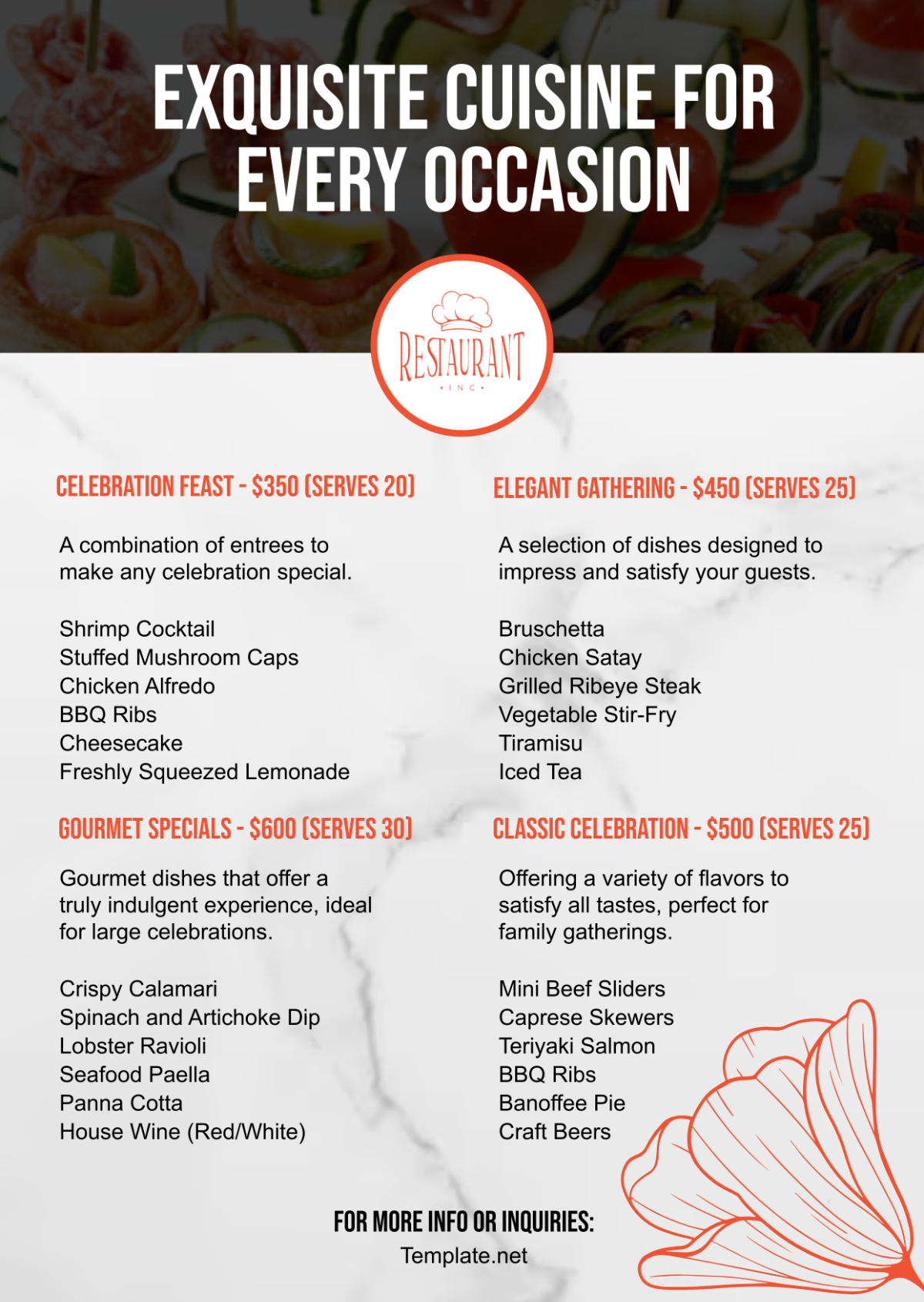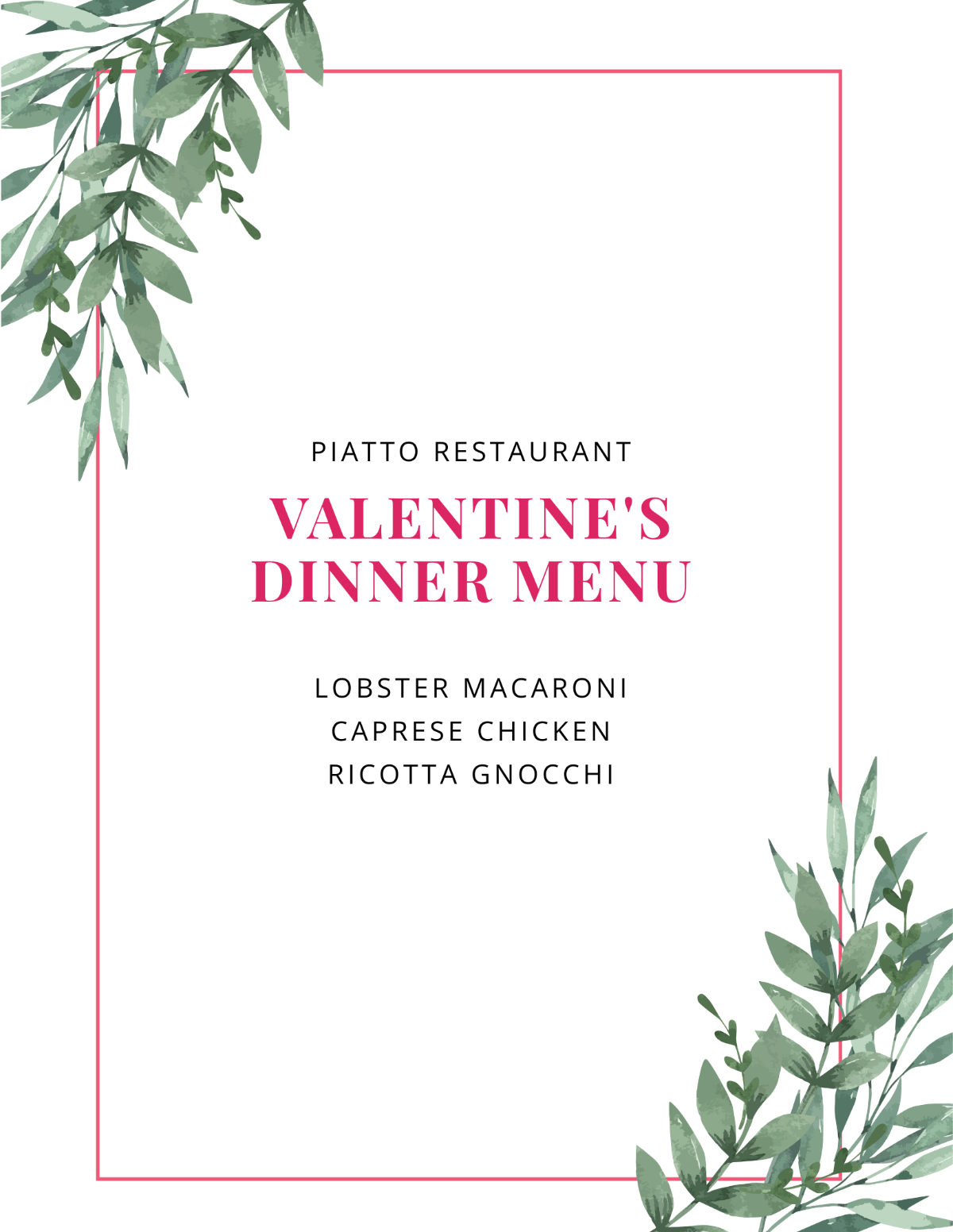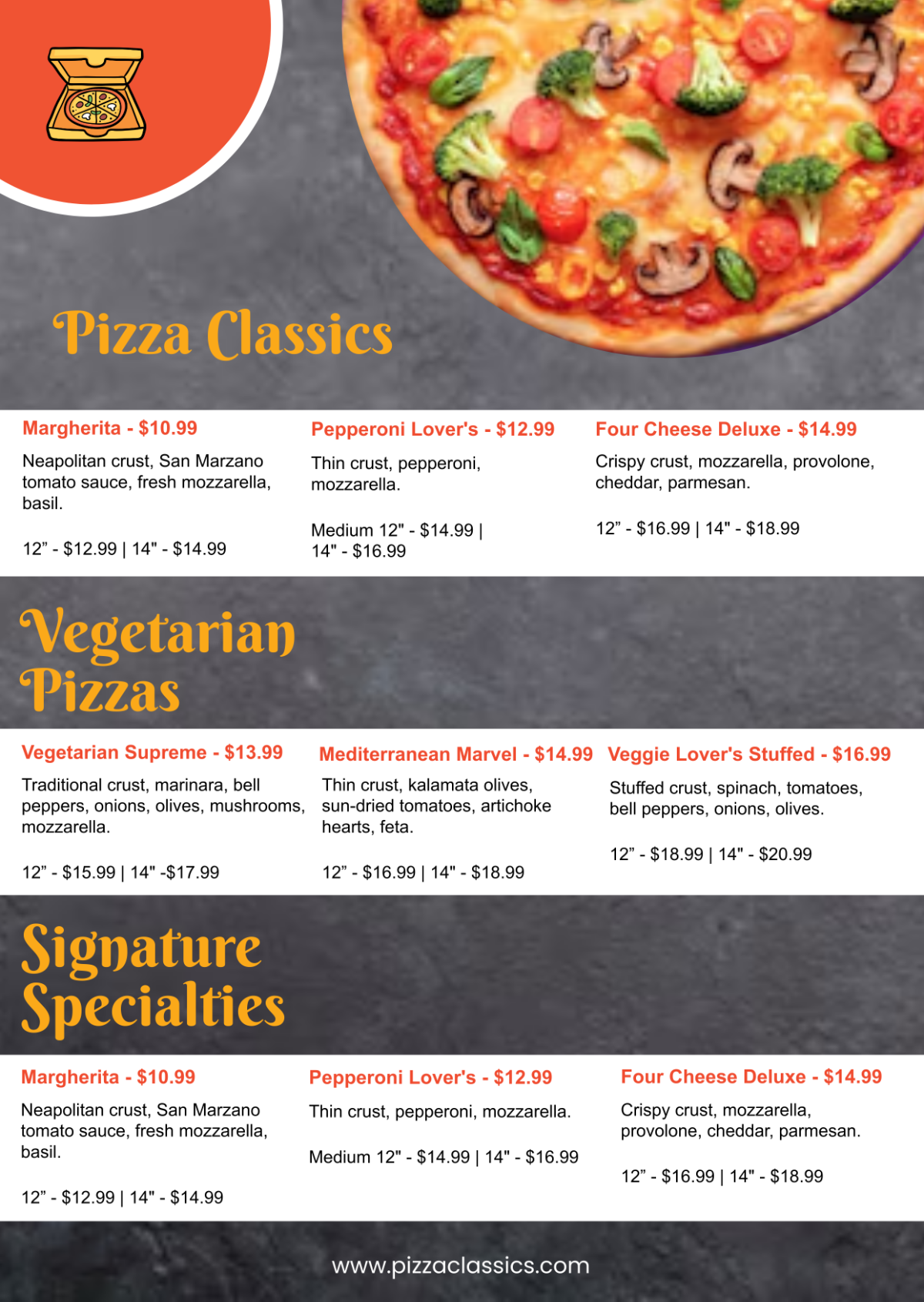Free Restaurant Menu Update Procedure Template
Restaurant Menu Update Procedure
I. Introduction
The purpose of this document is to provide a comprehensive guide for updating the restaurant menu at [Your Company Name]. Regular menu updates are essential for several reasons:
Maintaining Relevance: To keep the menu fresh and in line with current culinary trends, ensuring that our offerings are always exciting and appealing to our customers. This helps to attract new customers and retain existing ones.
Customer Satisfaction: To address and incorporate customer feedback and preferences, making sure that our menu reflects what our customers want and expect. By listening to our customers, we can make informed decisions that enhance their dining experience.
Seasonal Adaptation: To introduce seasonal ingredients and special promotions that can take advantage of the freshest produce available, offering unique flavors that change throughout the year. This not only excites customers but also helps to manage food costs effectively.
Nutritional Standards: To ensure that all menu items meet health and nutritional guidelines, catering to the growing demand for healthy dining options. This includes providing clear nutritional information and accommodating dietary restrictions.
Operational Efficiency: To ensure all staff are well-informed and trained on new items, which improves service efficiency and customer satisfaction. Proper training helps staff to confidently recommend and prepare new dishes.
This procedure ensures that all changes are systematically implemented across physical menus, digital platforms, and online ordering systems, providing a consistent experience for all customers. It involves a coordinated effort among various departments to ensure the accuracy and quality of the menu updates, fostering a seamless transition and minimal disruption to operations.
II. Scope
This procedure applies to all aspects of menu updates at [Your Company Name], ensuring a comprehensive approach to maintaining and updating the menu offerings.
A. Types of Menus
Physical Menus:
Printed menus available at the restaurant for dine-in customers, including main menus, kids' menus, dessert menus, and drink menus. These menus should be professionally printed and visually appealing.
Special event menus, such as holiday menus or catering menus, that may be used for specific occasions or private events hosted at the restaurant.
Digital Menus:
Electronic menus displayed on in-restaurant screens or tablets, which can be easily updated to reflect new items or changes. These should be user-friendly and accessible to all customers.
Digital menus accessible through QR codes at tables, providing a contactless option for viewing the menu and placing orders. This is particularly important for hygiene and convenience.
Online Menus:
Menus available on the company’s website, ensuring that customers can view the latest offerings before visiting the restaurant or placing an order online. The online menu should be easy to navigate and include detailed descriptions and images of each item.
Menus integrated into third-party online ordering platforms like Uber Eats, DoorDash, and Grubhub, ensuring consistency and availability of items across platforms. This helps to reach a broader audience and drive sales through delivery services.
B. Locations
Restaurant Locations:
All physical locations of [Your Company Name], ensuring uniformity across different outlets so that customers have a consistent experience regardless of which location they visit.
Franchise locations that must also adhere to the same menu update procedures to maintain brand integrity and consistency.
Online Platforms:
The company website, which must be kept up-to-date with the latest menu items and promotions. This includes ensuring that the menu is mobile-friendly and accessible.
Third-party delivery services, where the menu must be regularly updated to reflect current offerings and availability, ensuring that customers receive accurate information when ordering.
C. Menu Components
Food Items:
Appetizers, main courses, desserts, and side dishes, each with detailed descriptions, ingredients, and preparation methods to provide clarity to customers.
Seasonal items and specials that highlight fresh, seasonal ingredients and provide variety, encouraging customers to try something new each season.
Beverages:
Alcoholic drinks, including a diverse selection of cocktails, beers, wines, and spirits that cater to various tastes and preferences.
Non-alcoholic drinks, including soft drinks, juices, specialty drinks like smoothies or mocktails, and hot beverages such as coffee and tea, ensuring a wide range of options for all customers.
Specials and Promotions:
Limited-time offers and seasonal specials that create excitement and urgency, encouraging customers to visit more frequently and try new items.
Promotional items designed to attract new and returning customers, such as combo meals, discounts, or loyalty program incentives that add value and enhance the dining experience.
D. Stakeholders
Customers:
Ensuring customer satisfaction by continuously gathering and analyzing feedback, and making adjustments to the menu accordingly.
Addressing specific customer needs, such as dietary restrictions, preferences for certain types of cuisine, or requests for healthier options, to ensure a broad appeal.
Staff:
Training and updating staff on new menu items and procedures, ensuring they are knowledgeable and can confidently recommend and prepare new dishes.
Providing ongoing support and resources to staff to help them adapt to menu changes, including training sessions, manuals, and tastings.
Suppliers:
Coordinating with suppliers for new ingredients or items, ensuring a reliable and high-quality supply chain to support new menu offerings.
Establishing strong relationships with suppliers to negotiate better prices, ensure timely deliveries, and maintain consistency in the quality of ingredients.
E. Systems and Tools
Menu Management Software:
Systems used to update and manage menu data, including tracking inventory, sales data, and customer preferences, to make informed decisions about menu changes.
Integrations with other restaurant management systems, such as POS (Point of Sale) systems, to ensure seamless updates across all platforms.
Printing Services:
Vendors used for producing physical menus, ensuring high-quality printing and timely delivery of updated menus to all locations.
Coordination with designers and printers to ensure that the physical menus are visually appealing, accurately reflect the brand, and are easy to read.
Digital Platforms:
Tools and websites for displaying the updated menu online, ensuring that changes are reflected across all digital touchpoints quickly and accurately.
Use of social media and email marketing to announce menu updates and promote new items to customers, driving awareness and engagement.
F. Timeline
Regular Updates:
Quarterly reviews and updates to the menu, ensuring that the offerings remain relevant and aligned with customer preferences and market trends.
Scheduled menu evaluations and meetings with the Menu Development Team to discuss potential changes and gather input from various stakeholders.
Seasonal Changes:
Updates aligned with seasonal ingredients and trends, introducing new items that reflect the freshest produce and current culinary trends.
Special promotions and events tied to seasonal changes, such as holiday-themed menus or summer specials, to attract customers and boost sales during specific times of the year.
Immediate Adjustments:
Addressing urgent changes due to supply issues or customer feedback, ensuring that the menu remains accurate and reflects the current availability of items.
Rapid response to any issues or complaints regarding menu items, with immediate adjustments to ensure customer satisfaction and operational efficiency.
G. Compliance and Standards
Nutritional Information:
Ensuring all items meet nutritional guidelines, providing detailed nutritional information for each menu item, including calories, fat, carbohydrates, and protein.
Regularly reviewing and updating nutritional information to comply with health regulations and dietary trends, ensuring transparency and accuracy.
Allergen Information:
Clearly labeling potential allergens in menu items, such as nuts, dairy, gluten, and shellfish, to ensure the safety of customers with food allergies.
Providing alternative options for customers with specific dietary restrictions or preferences, such as gluten-free or vegan options.
Pricing:
Maintaining consistent and competitive pricing, ensuring that menu items are priced appropriately based on ingredient costs, market conditions, and customer expectations.
Regularly reviewing and adjusting prices as needed to reflect changes in costs, market trends, and competitive landscape.
III. Roles and Responsibilities
A. Menu Development Team
Head Chef
Proposes new menu items and modifications to existing items, ensuring they align with the restaurant’s culinary vision and customer preferences.
Develops detailed recipes and ensures consistency in preparation across all locations, maintaining high standards of quality and taste.
Conducts taste tests and quality checks, involving staff and selected customers to gather feedback and make necessary adjustments before finalizing new items.
Nutritionist
Provides detailed nutritional information for each menu item, including calorie counts, macronutrient breakdowns, and potential allergens.
Ensures compliance with health regulations and dietary requirements, such as low-sodium or gluten-free options, to cater to diverse customer needs.
Advises on healthy options and alternatives, helping to create a balanced menu that offers both indulgent and health-conscious choices.
Marketing Manager
Develops marketing strategies for new menu items, including promotional campaigns, social media posts, and email marketing to generate excitement and awareness.
Coordinates with the design team for menu layout and visual appeal, ensuring that the menu is attractive, easy to read, and reflects the brand identity.
Plans promotional activities and campaigns, such as limited-time offers, special events, and loyalty program incentives, to drive customer engagement and sales.
B. IT Department
Web Developer
Updates the online menu on the company’s website, ensuring that new items, descriptions, and prices are accurately reflected and easily accessible to customers.
Integrates new items into the online ordering system, making sure that the digital menu is synchronized with the physical menu and third-party platforms.
Ensures compatibility across different devices and platforms, optimizing the online menu for desktop, mobile, and tablet users to provide a seamless browsing and ordering experience.
Database Administrator
Manages the menu database, ensuring that all data is accurate, up-to-date, and securely stored.
Ensures data integrity and accessibility, conducting regular backups and updates to prevent data loss and ensure smooth operations.
Provides support for troubleshooting and resolving any technical issues related to menu updates, ensuring minimal downtime and disruptions.
C. Operations Manager
Restaurant Manager
Ensures physical menus are updated and available at all locations, coordinating with the printing service to distribute new menus promptly.
Informs and trains staff about menu changes and new items, providing detailed briefings and resources to ensure they are well-prepared to serve customers.
Monitors inventory levels to support new menu items, working with suppliers and the kitchen team to ensure that all ingredients are available and properly stocked.
Training Coordinator
Develops training materials for new menu items, including preparation methods, ingredient information, and best practices for service.
Conducts training sessions for restaurant staff, ensuring they understand the new items and are confident in their ability to prepare and serve them.
Ensures all staff members are up-to-date with the latest menu changes, providing ongoing support and refresher training as needed.
IV. Menu Update Process
A. Proposal and Approval
1. Proposal Submission
1.1 Head Chef submits a new menu proposal, including:
Description of new items, detailing ingredients, preparation methods, and unique selling points.
Ingredients list, specifying quantities, sources, and any special requirements.
Preparation method, including step-by-step instructions, cooking times, and presentation guidelines.
Pricing, based on cost analysis and competitive pricing strategies, ensuring profitability and customer value.
2. Review and Feedback
2.1 Menu Development Team reviews the proposal, evaluating its feasibility, appeal, and alignment with the restaurant’s concept and goals.
2.2 Nutritionist verifies nutritional information, ensuring accuracy and compliance with health regulations and dietary standards.
2.3 Marketing Manager assesses marketability and promotional strategies, considering how the new items will be marketed and positioned to attract customers.
3. Approval
3.1 The proposal is presented to the Executive Committee for final approval, ensuring that all stakeholders are aligned and any concerns are addressed.
3.2 Upon approval, the Marketing Manager coordinates with the Design Team to update the menu layout, incorporating new items and ensuring a cohesive and appealing presentation.
B. Menu Design and Layout
1. Design Update
1.1 Design Team updates the menu layout to incorporate new items and remove discontinued items, ensuring a visually appealing and easy-to-navigate design. 1.2 Marketing Manager reviews and approves the design, ensuring it aligns with the brand’s visual identity and marketing strategy.
2. Printing and Distribution
2.1 Operations Manager coordinates with a printing service to produce updated physical menus, ensuring high-quality printing and timely delivery to all locations. 2.2 Restaurant Manager ensures all locations receive updated menus, replacing old menus and verifying that the new menus are correctly displayed.
C. Digital Menu Update
1. Website Update
1.1 Web Developer updates the online menu on the company’s website, ensuring that new items, descriptions, and prices are accurately reflected and easily accessible to customers.
1.2 Database Administrator ensures the menu database is synchronized with the website, providing accurate and up-to-date information across all digital platforms.
2. Online Ordering Platforms
2.1 Web Developer updates the menu on all online ordering platforms, including third-party services like Uber Eats, DoorDash, and Grubhub, ensuring consistency and availability of items.
2.2 Database Administrator ensures all data is accurately integrated and reflected on these platforms, preventing discrepancies and customer dissatisfaction.
D. Staff Training
1. Training Materials
1.1 Training Coordinator develops training materials for new menu items, including preparation methods, ingredient information, and best practices for service.
1.2 Restaurant Manager schedules training sessions for all staff, ensuring they are well-prepared and confident in their ability to serve new items.
2. Implementation
2.1 Training sessions are conducted, and staff are briefed on new items and preparation methods, providing hands-on practice and detailed instructions.
2.2 Ongoing support and refresher training are provided as needed, ensuring all staff remain up-to-date and confident in their knowledge and skills.
V. Monitoring and Feedback
A. Initial Launch Review
Marketing Manager and Restaurant Manager monitor customer feedback during the first month of the new menu launch, gathering data from surveys, reviews, and direct customer interactions.
Head Chef and Nutritionist assess any issues related to preparation and nutritional information, making necessary adjustments to improve quality and customer satisfaction.
B. Ongoing Feedback
Restaurant Manager collects ongoing feedback from customers and staff, using comment cards, online reviews, and direct feedback to identify areas for improvement.
Menu Development Team reviews feedback quarterly to make necessary adjustments, ensuring the menu remains relevant, appealing, and aligned with customer preferences.
VI. Sample Data
A. Menu Items
Item Name | Description | Price ($) | Calories (kcal) |
|---|---|---|---|
Grilled Chicken Salad | Mixed greens, grilled chicken, vinaigrette | 12.99 | 350 |
Vegan Burger | Plant-based patty, lettuce, tomato, vegan mayo | 11.49 | 400 |
Spaghetti Bolognese | Spaghetti, beef Bolognese sauce, parmesan | 14.99 | 600 |
Margherita Pizza | Tomato sauce, mozzarella, basil | 10.99 | 700 |
Chocolate Lava Cake | Warm chocolate cake, vanilla ice cream | 8.99 | 450 |
B. Nutritional Information Chart
Item | Fat (g) | Carbohydrates (g) | Protein (g) | Sodium (mg) |
|---|---|---|---|---|
Grilled Chicken Salad | 15 | 20 | 30 | 600 |
Vegan Burger | 20 | 50 | 15 | 700 |
Spaghetti Bolognese | 25 | 75 | 20 | 800 |
Margherita Pizza | 30 | 80 | 25 | 900 |
Chocolate Lava Cake | 20 | 50 | 5 | 300 |
VII. Review and Revision
This procedure document will be reviewed annually by the Operations Manager and updated as necessary to reflect changes in the menu update process. The review will include an assessment of the effectiveness of the current process, feedback from staff and customers, and any changes in industry standards or regulations. Any updates to the procedure will be communicated to all relevant stakeholders to ensure continued alignment and compliance.
For further information, please contact:
[Your Name]
[Your Company Email]
[Your Company Number]
[Your Company Address]
